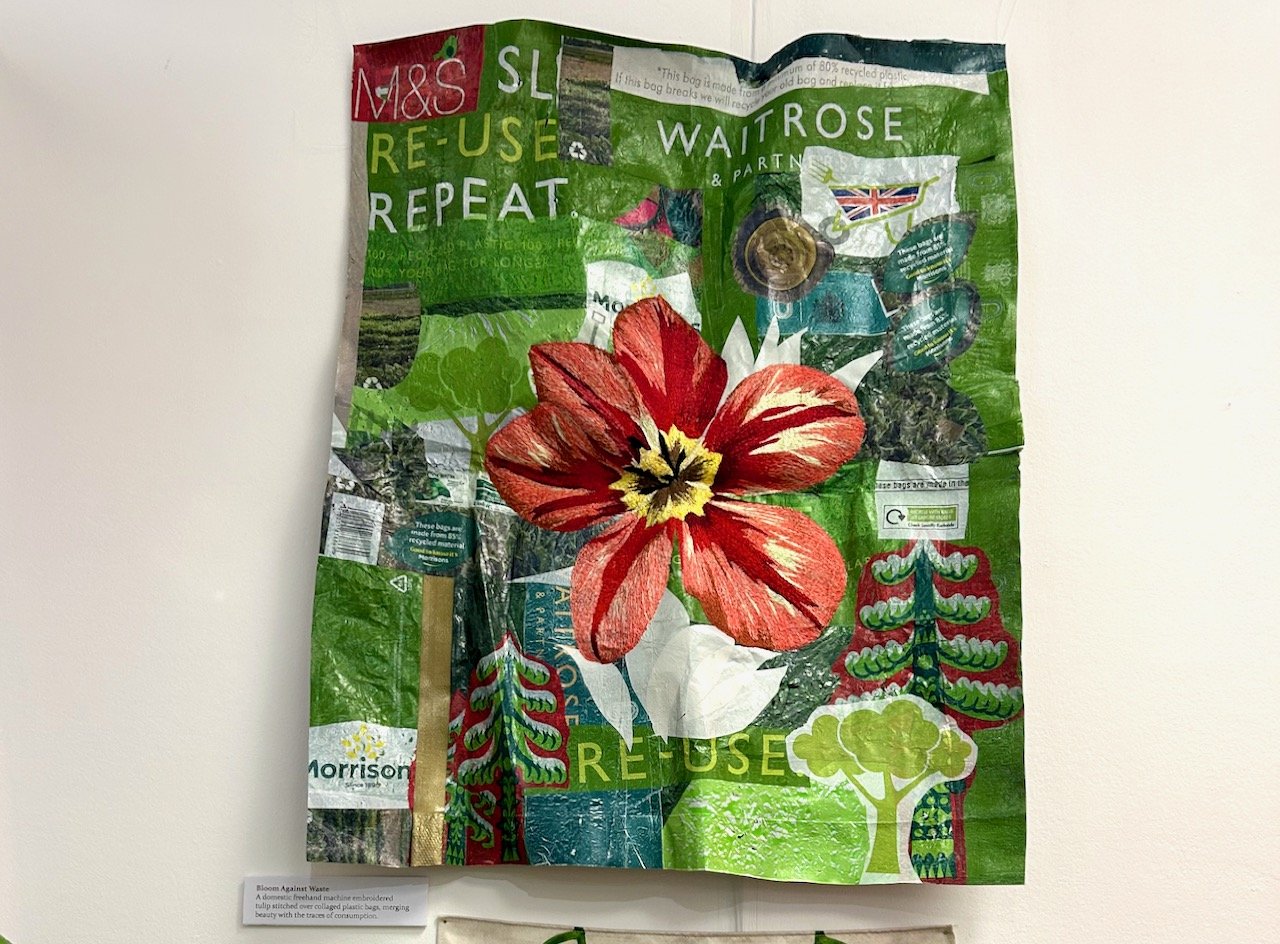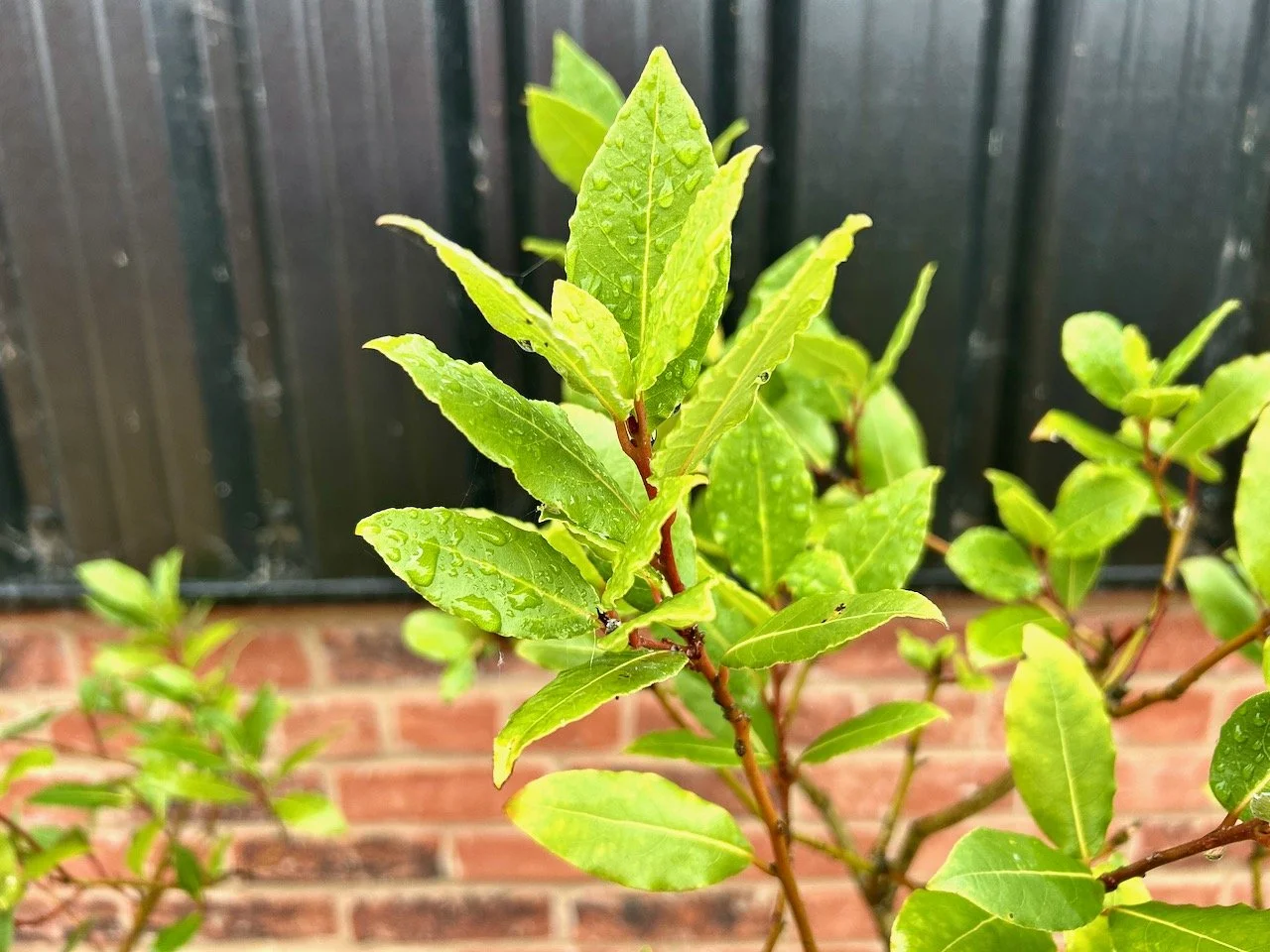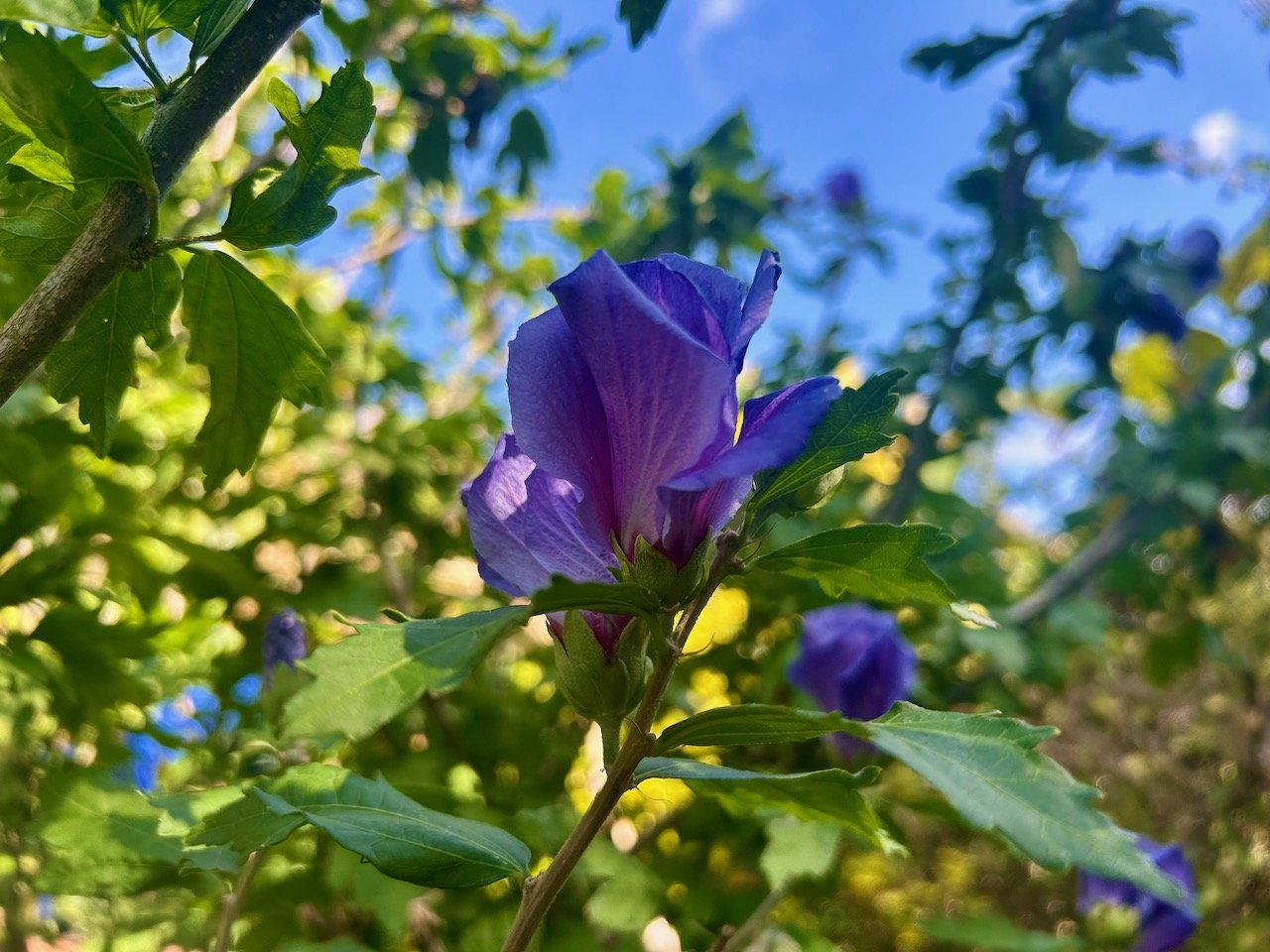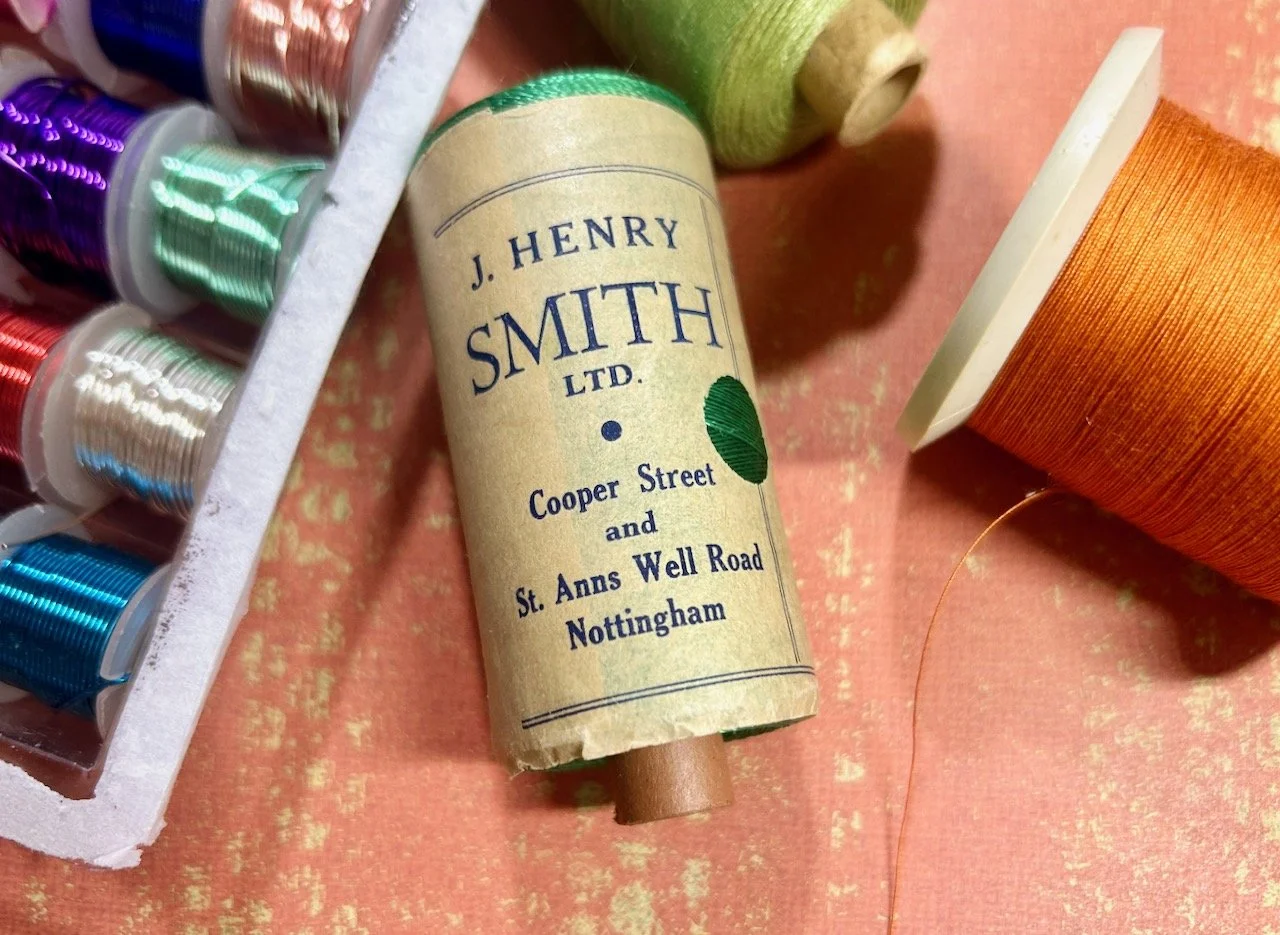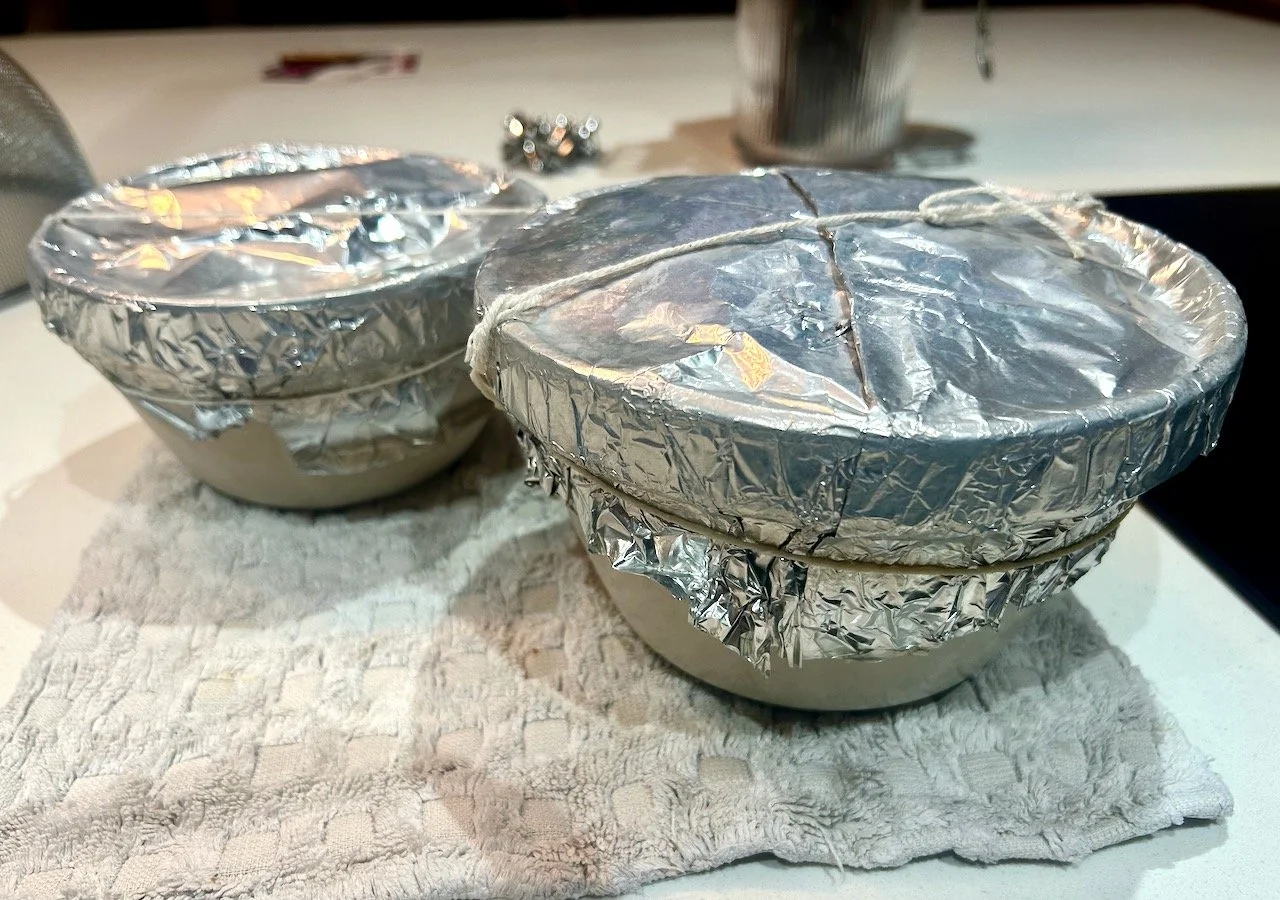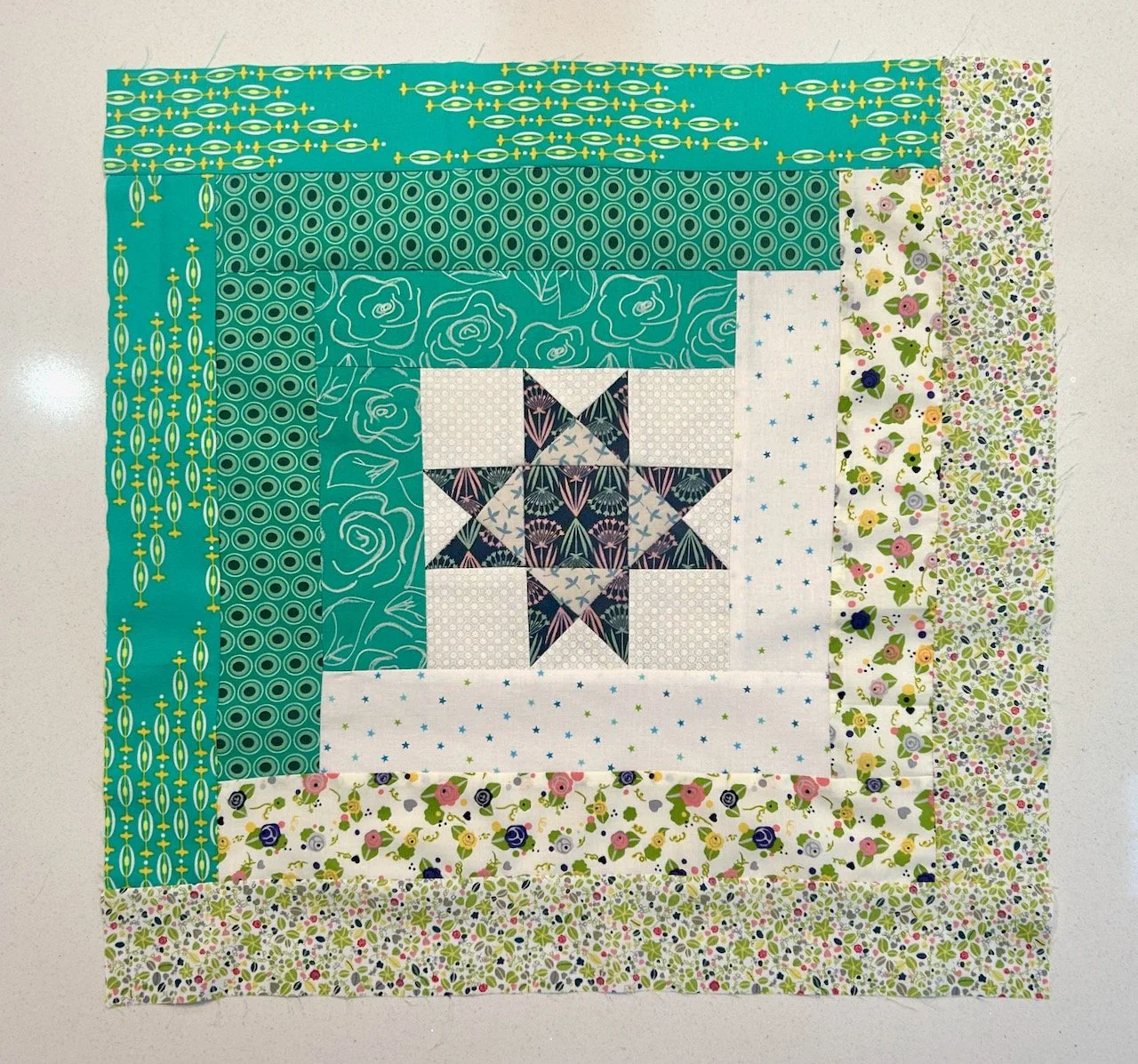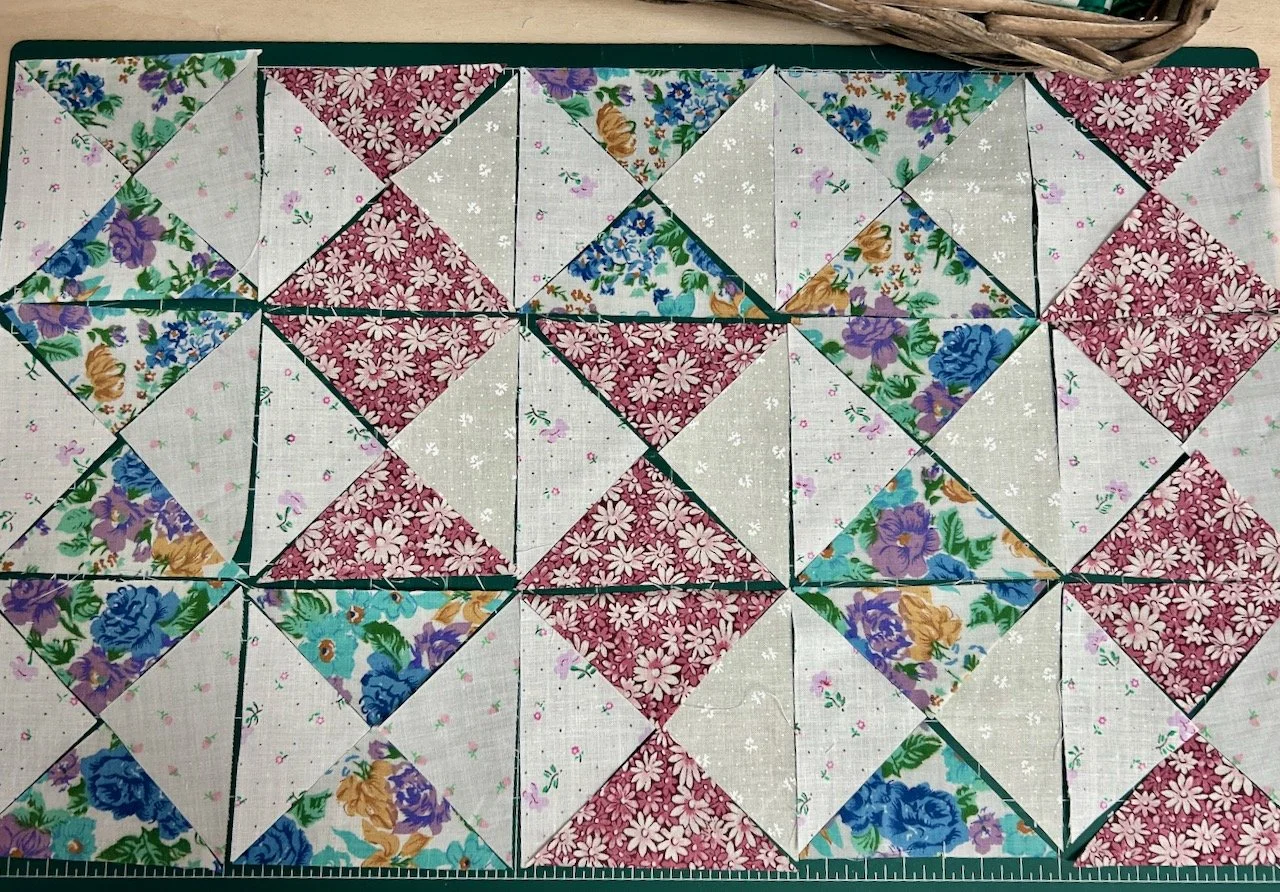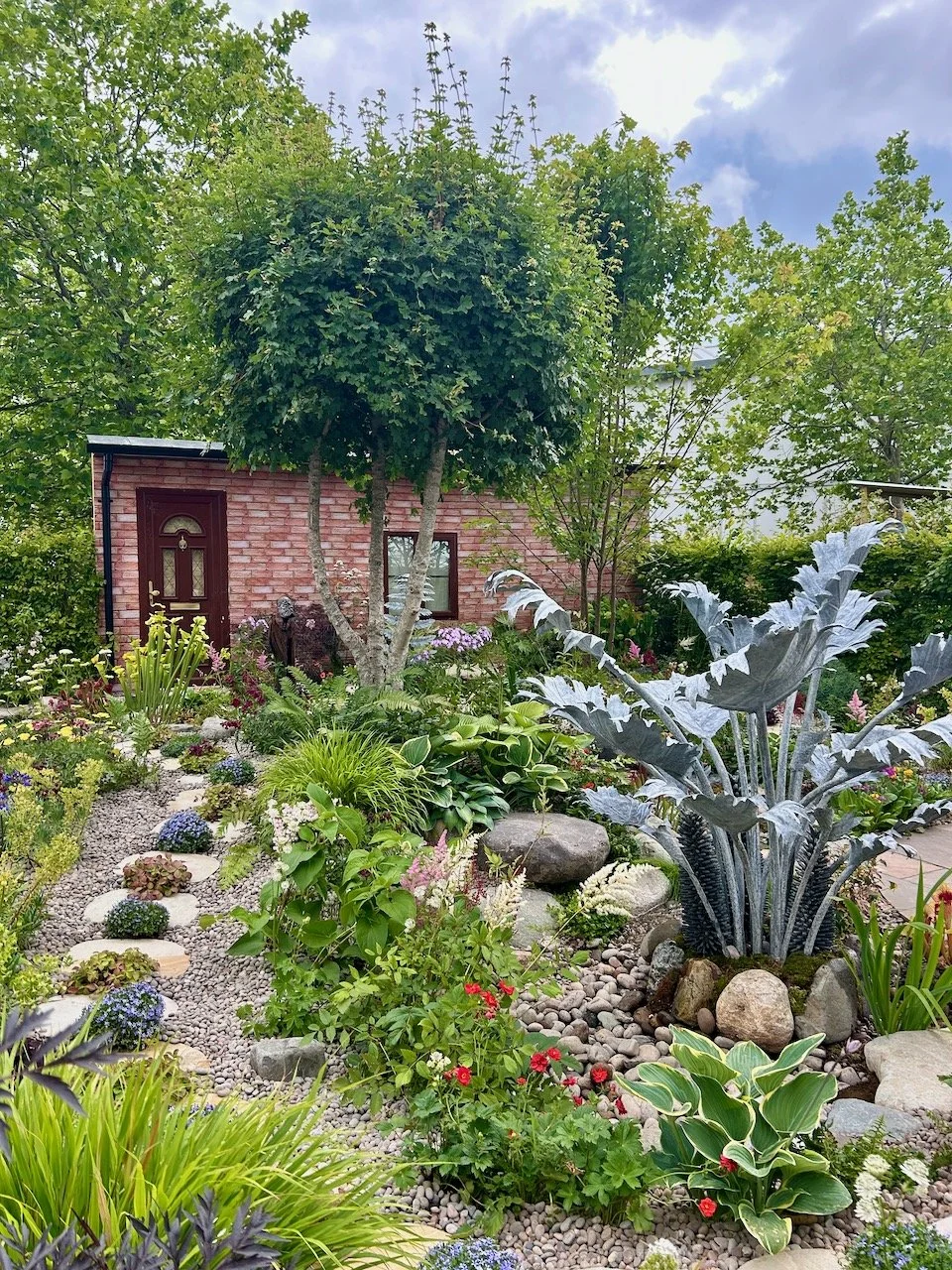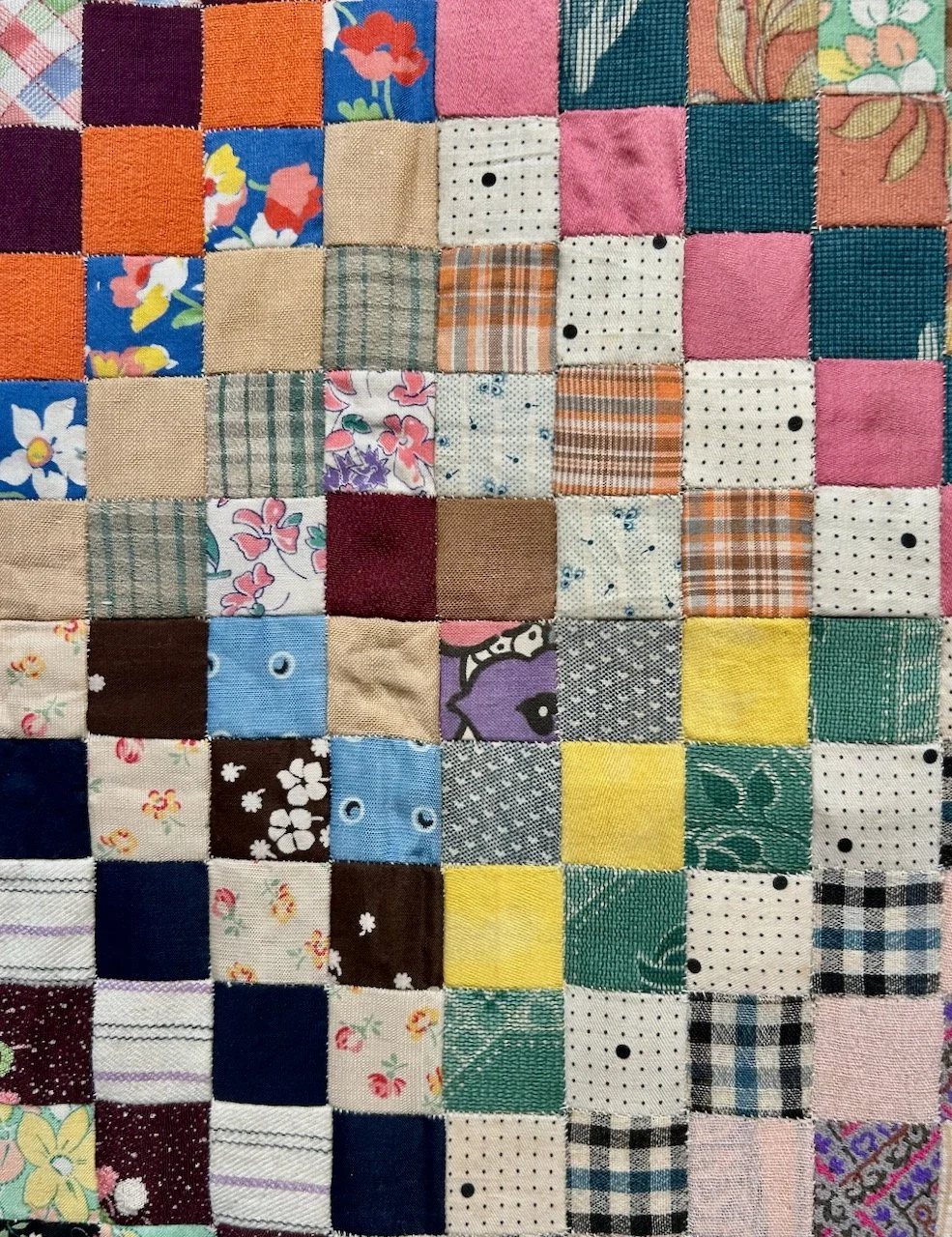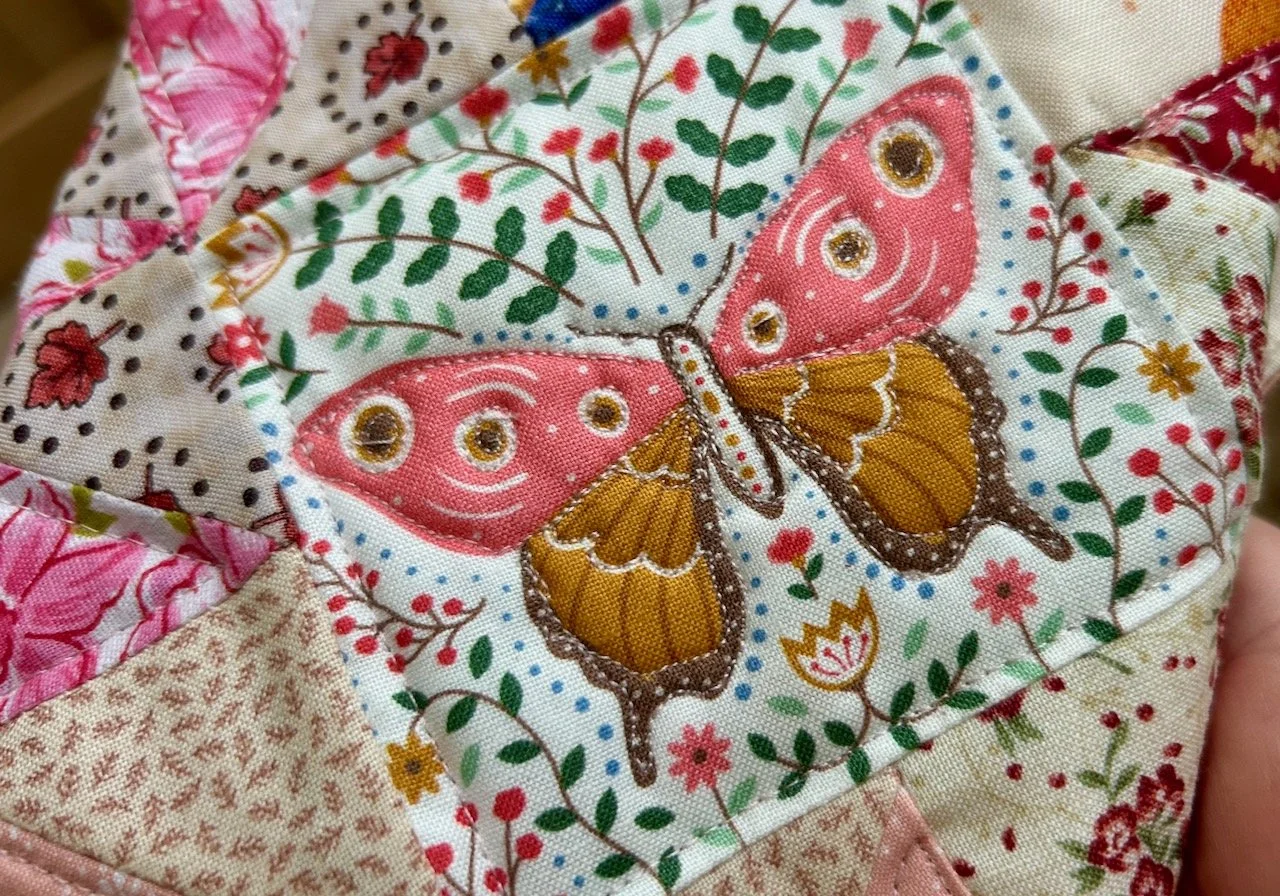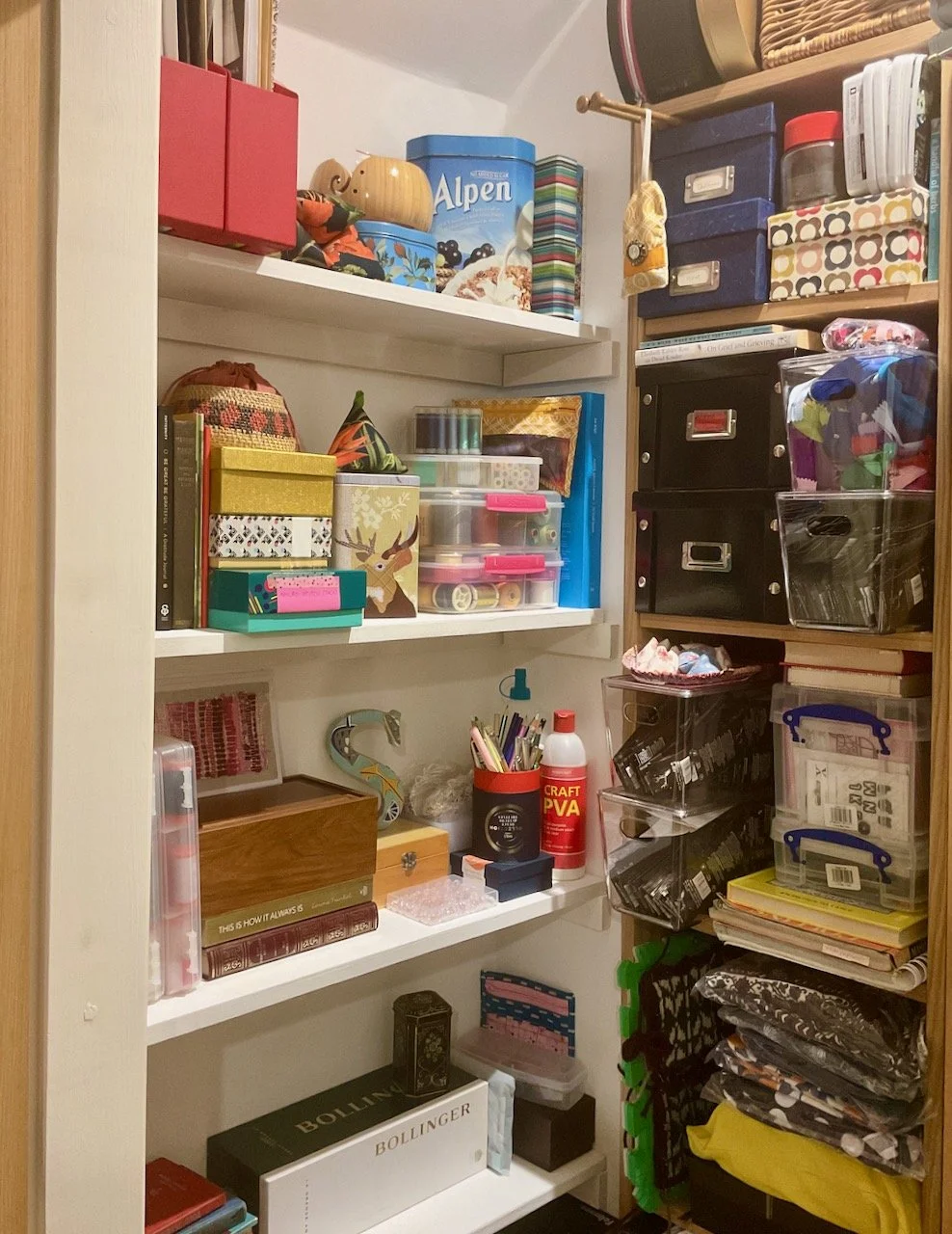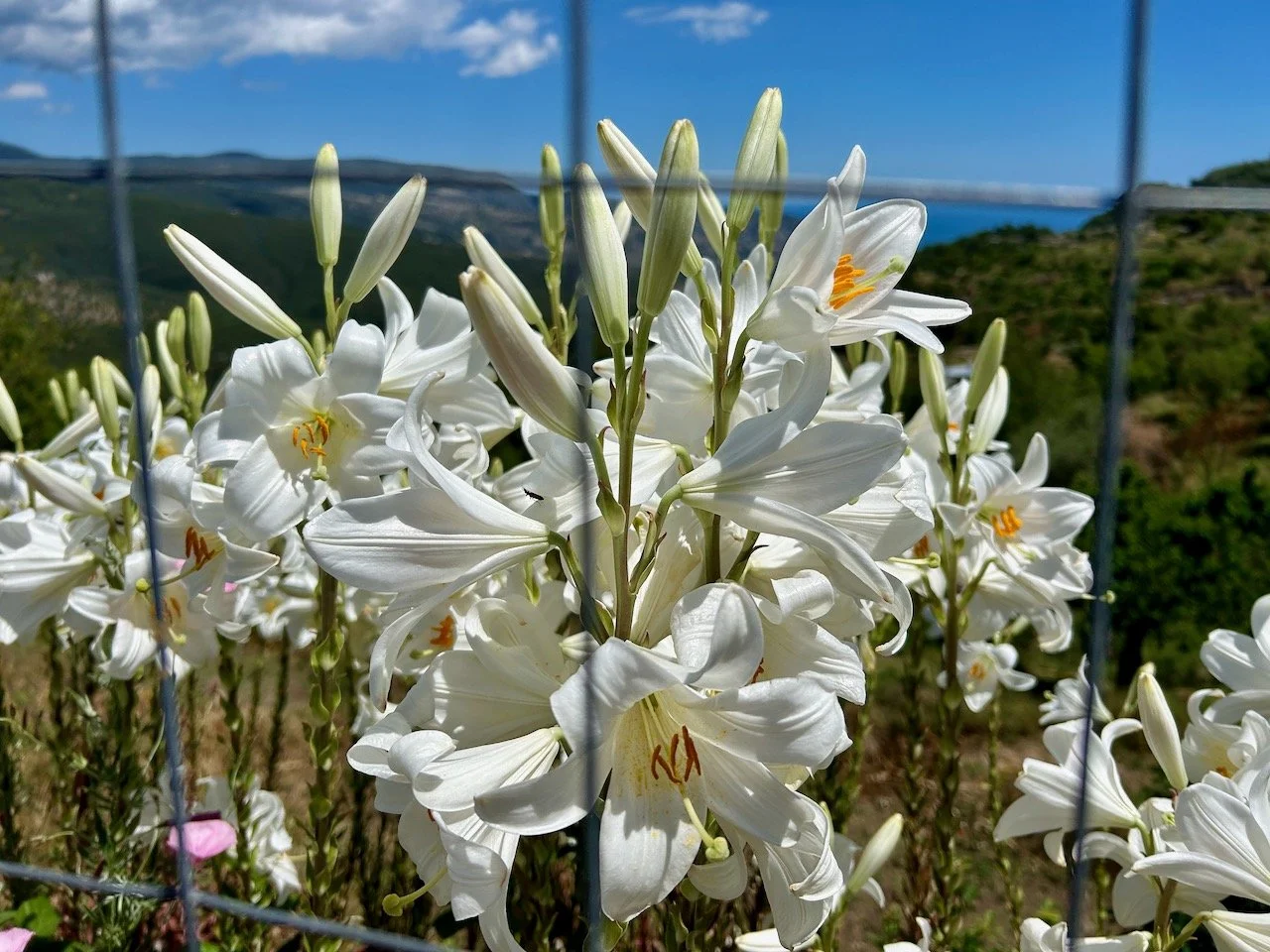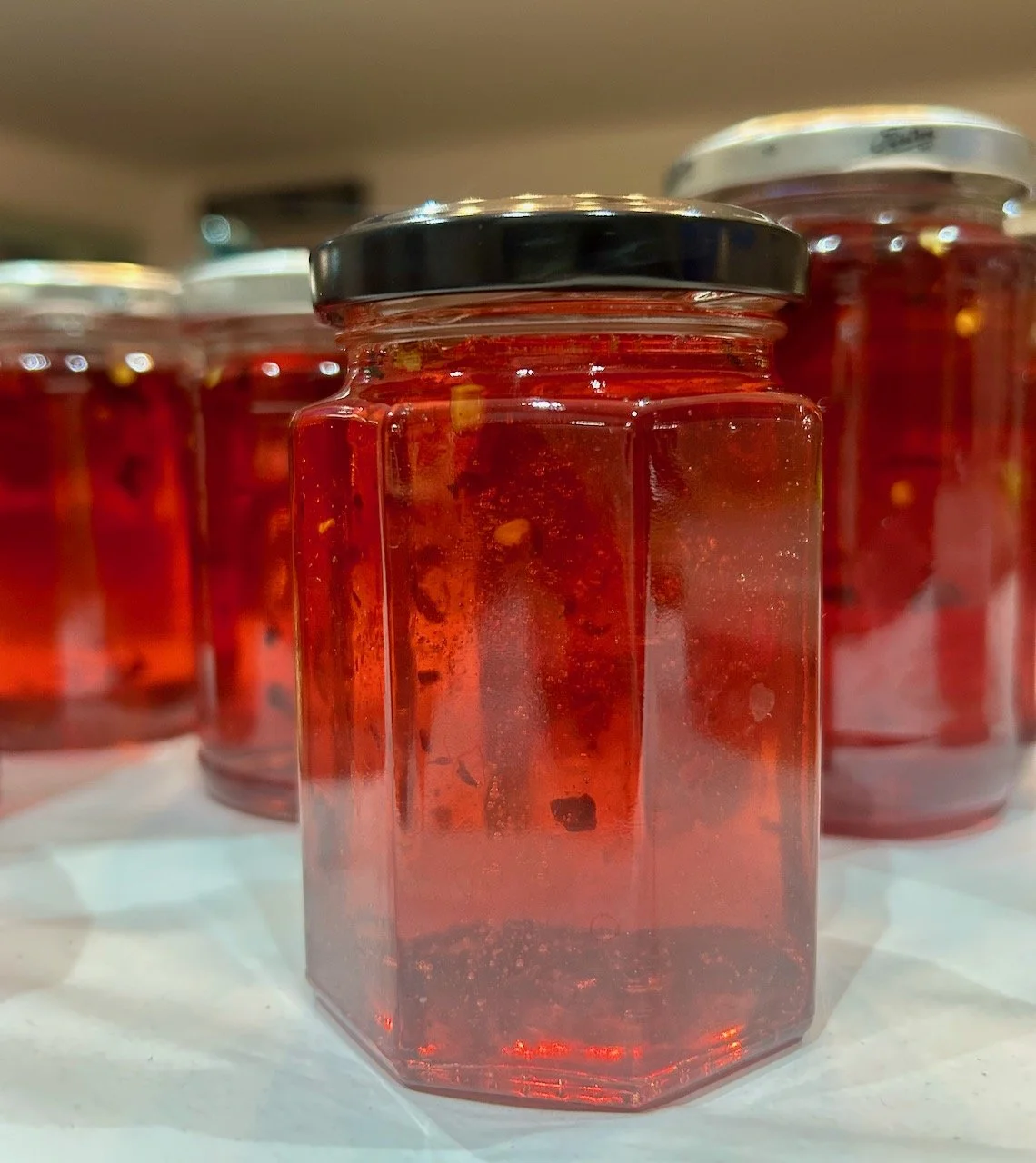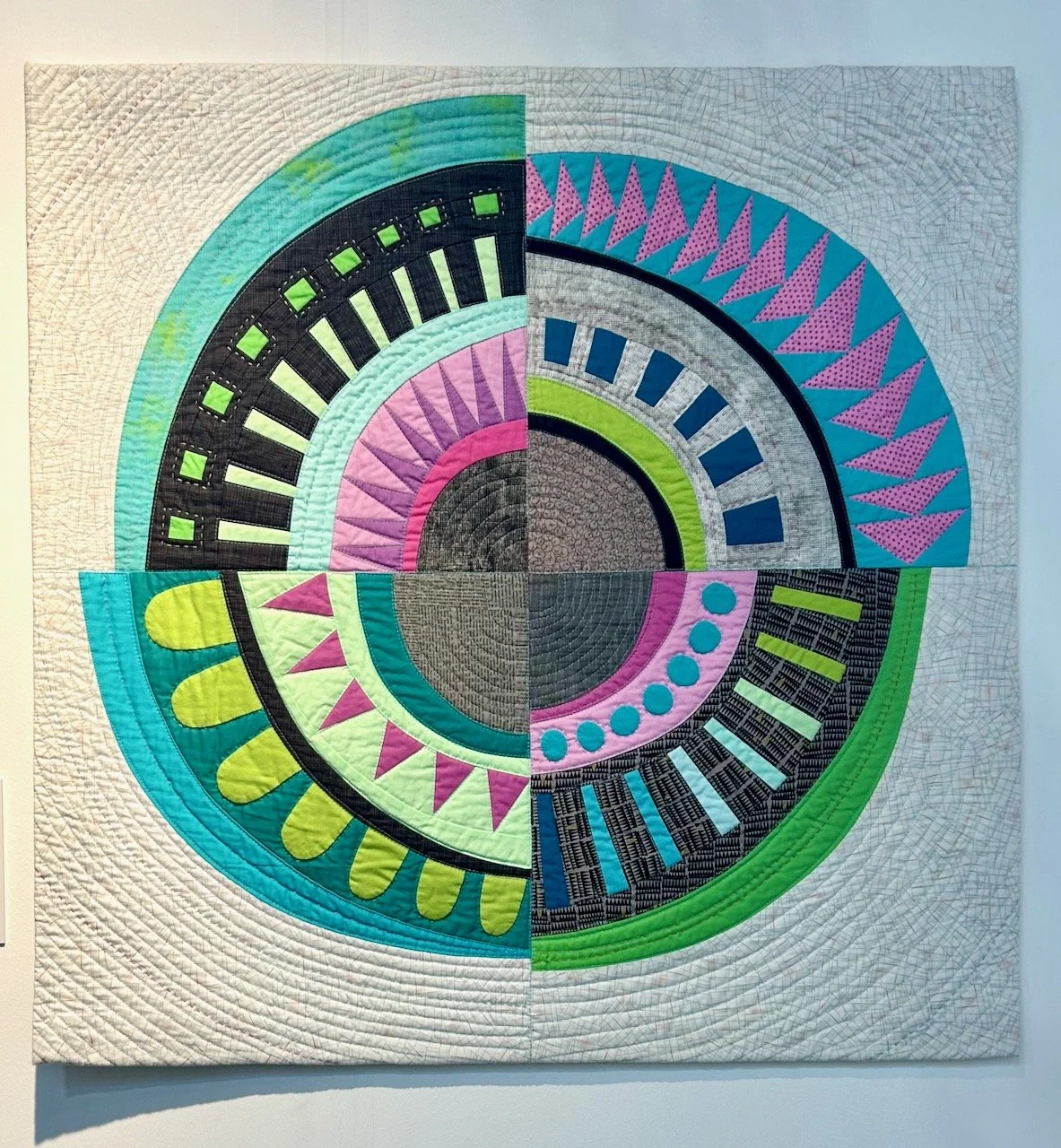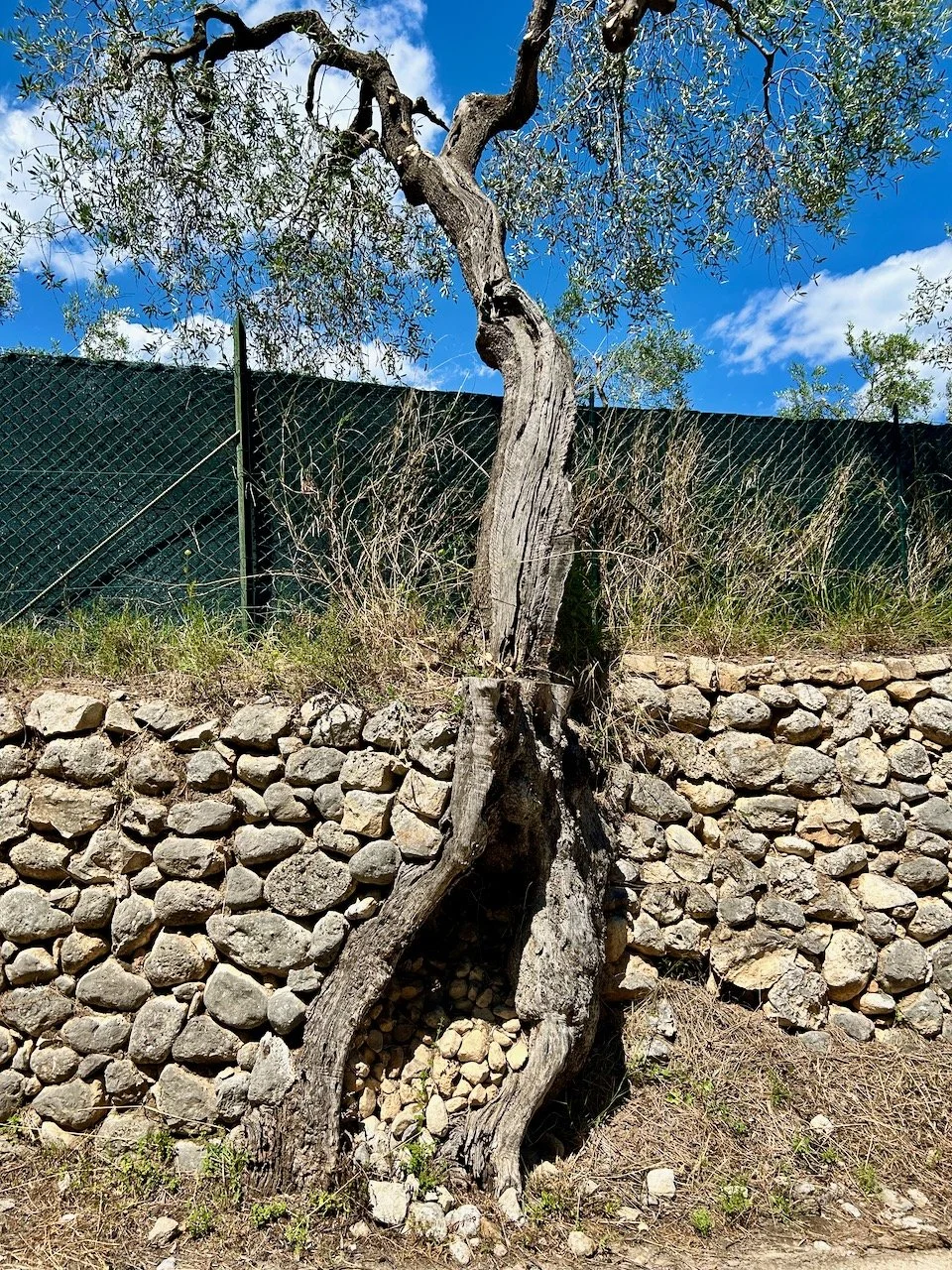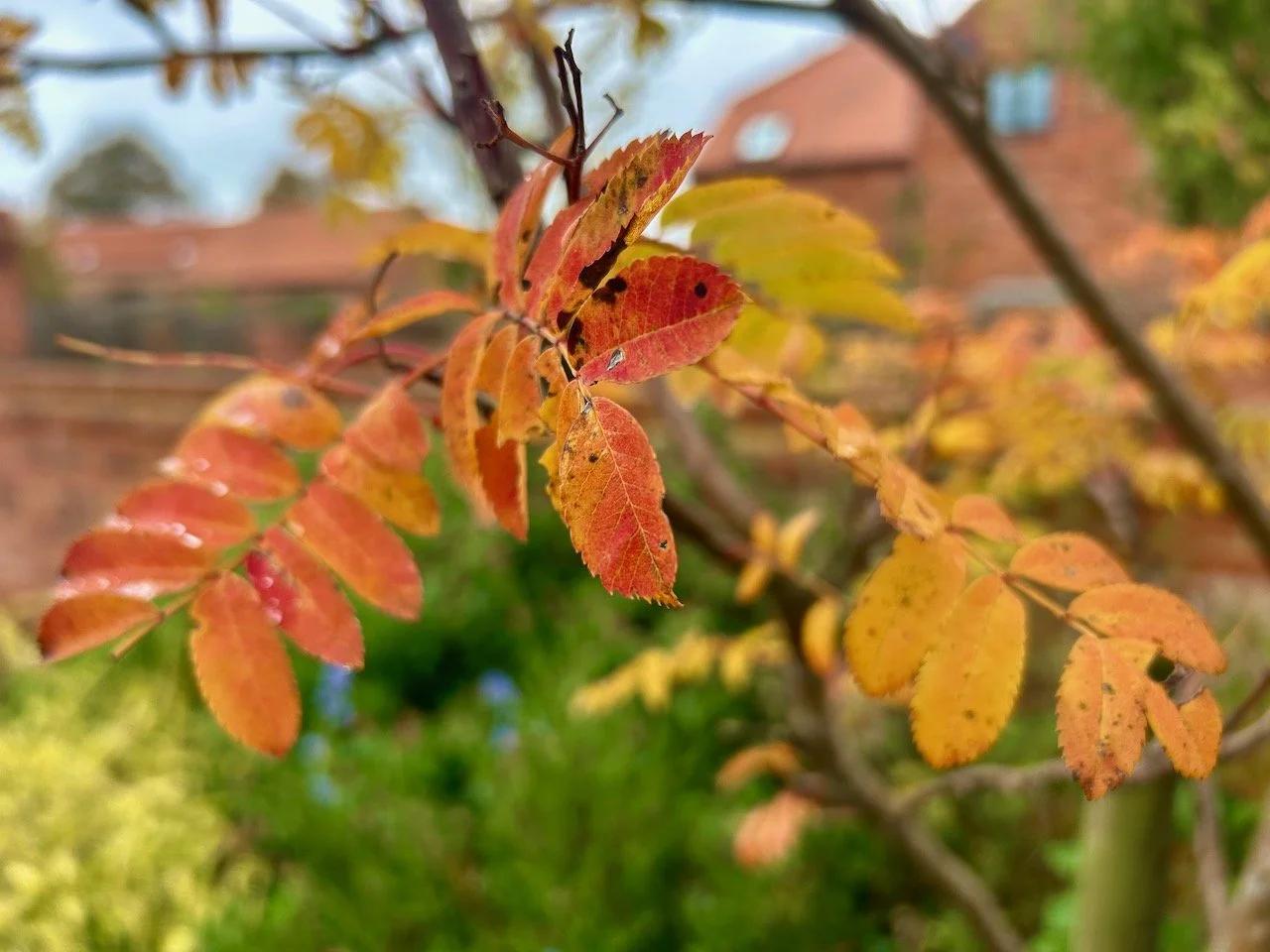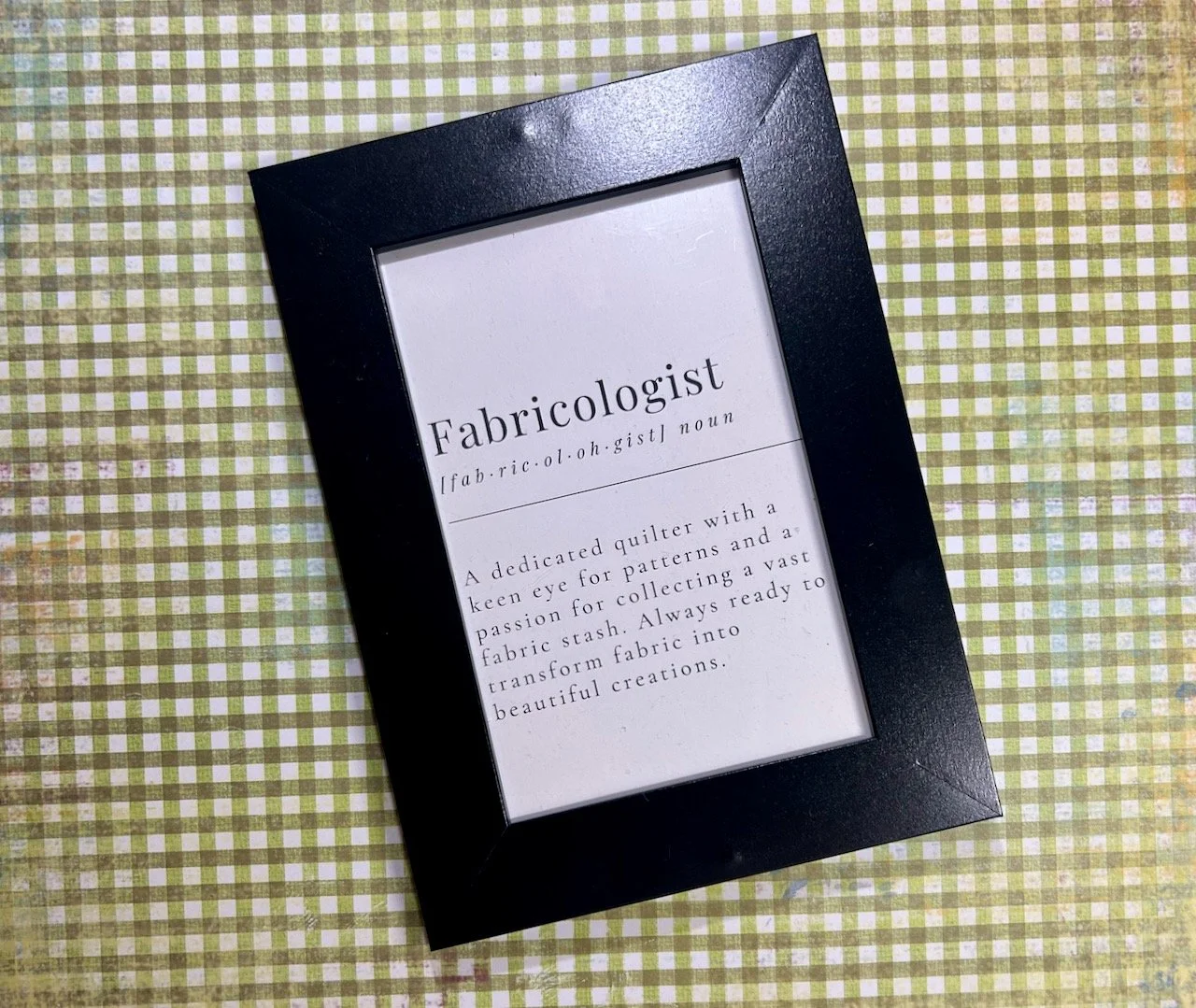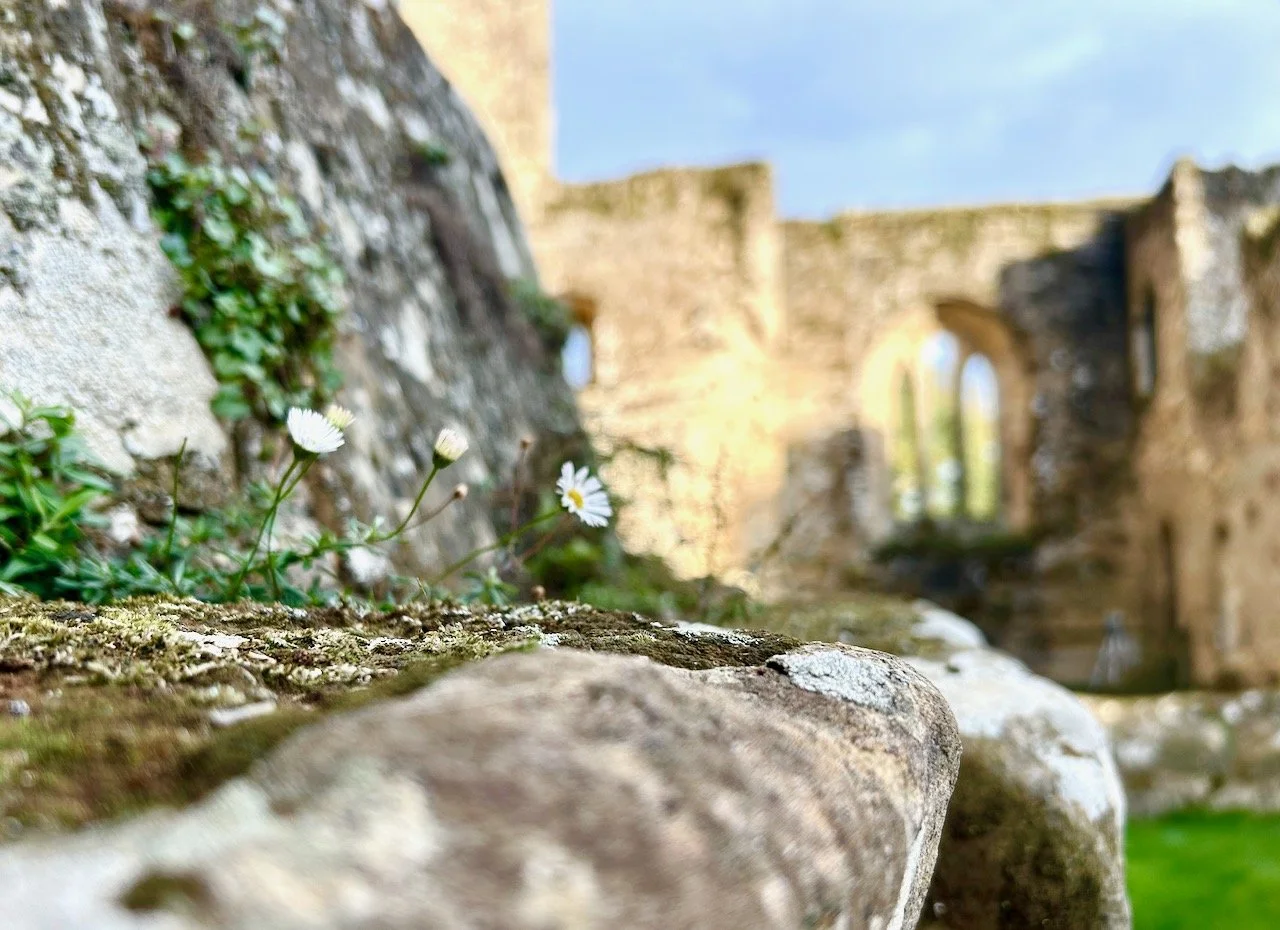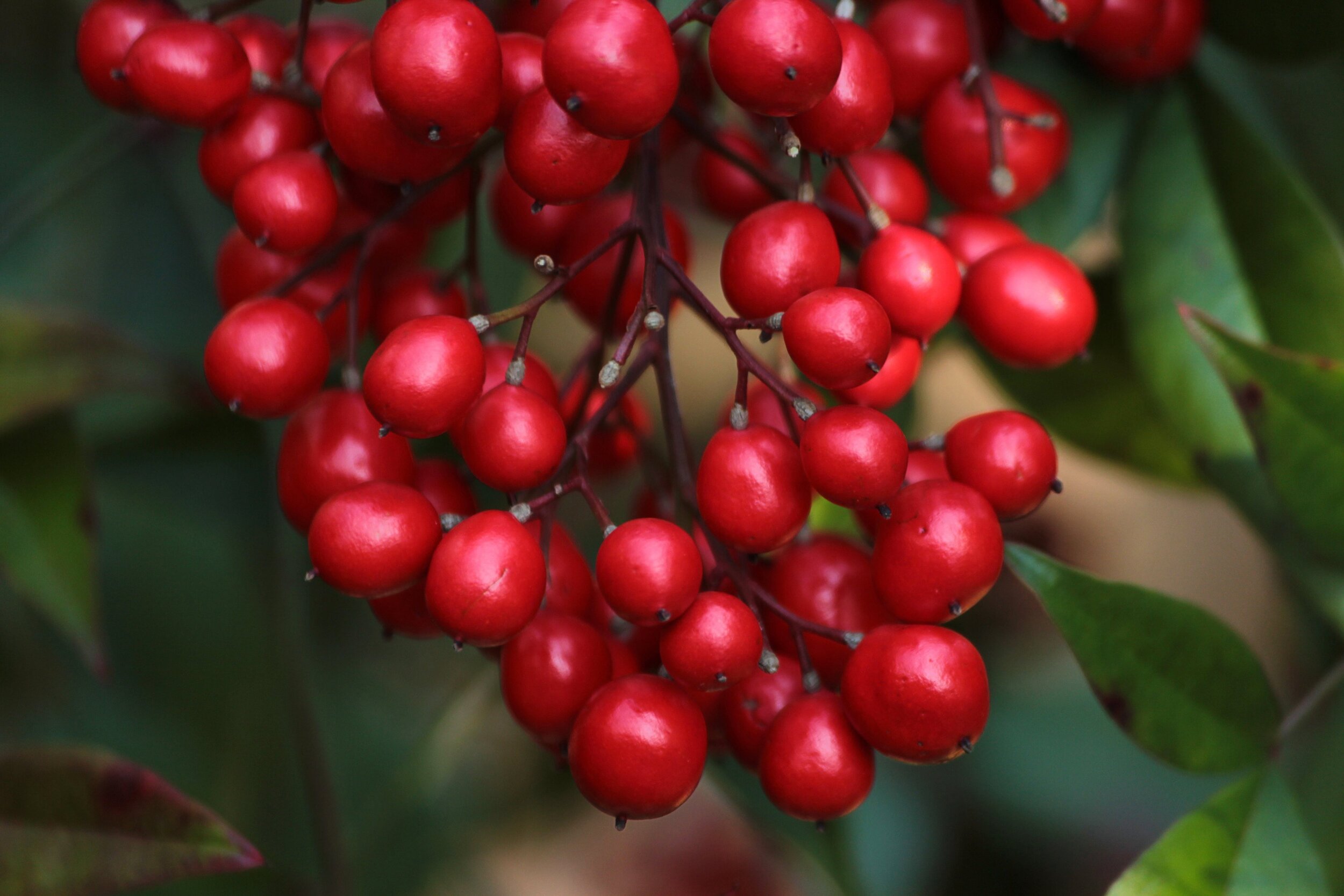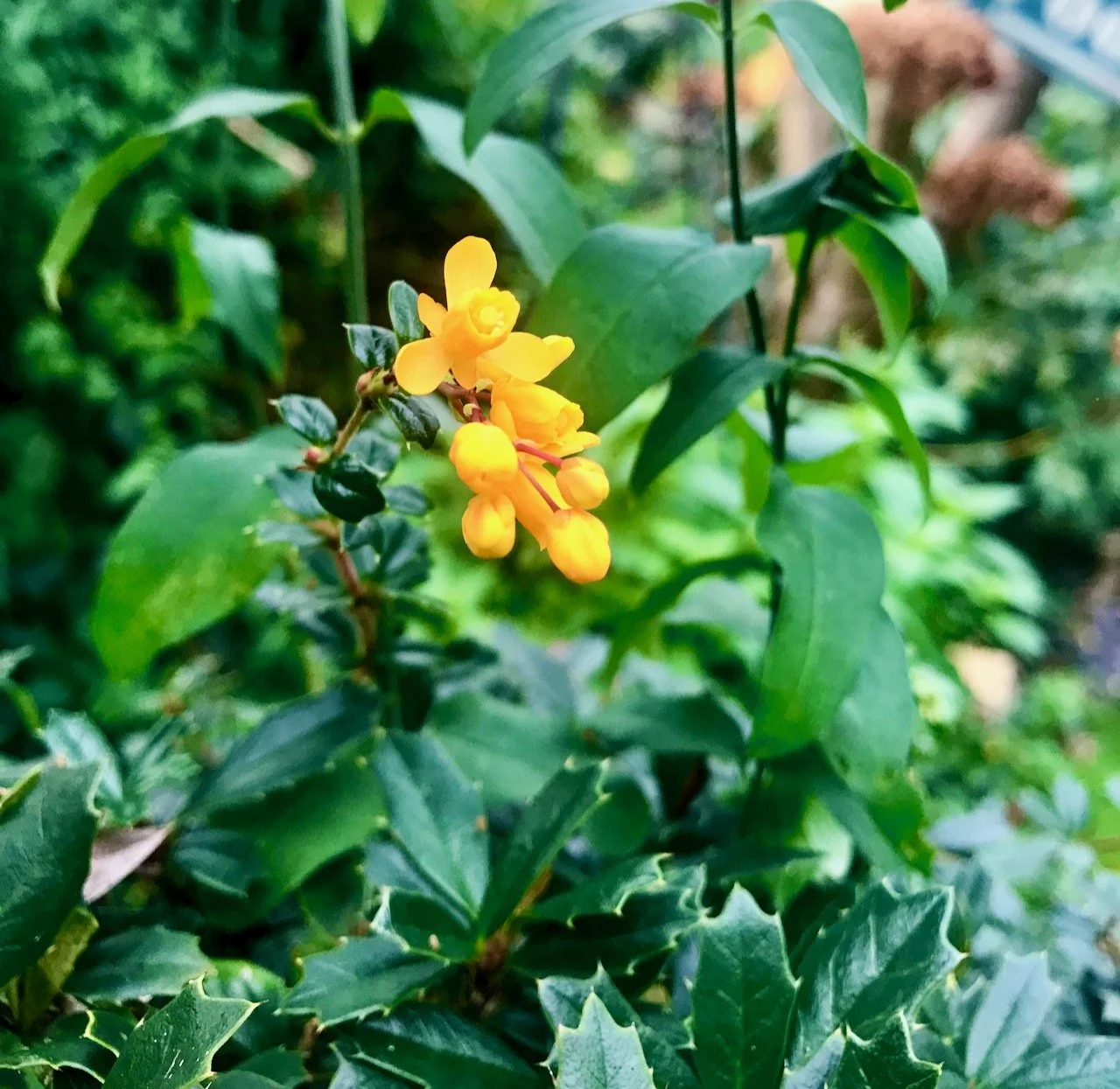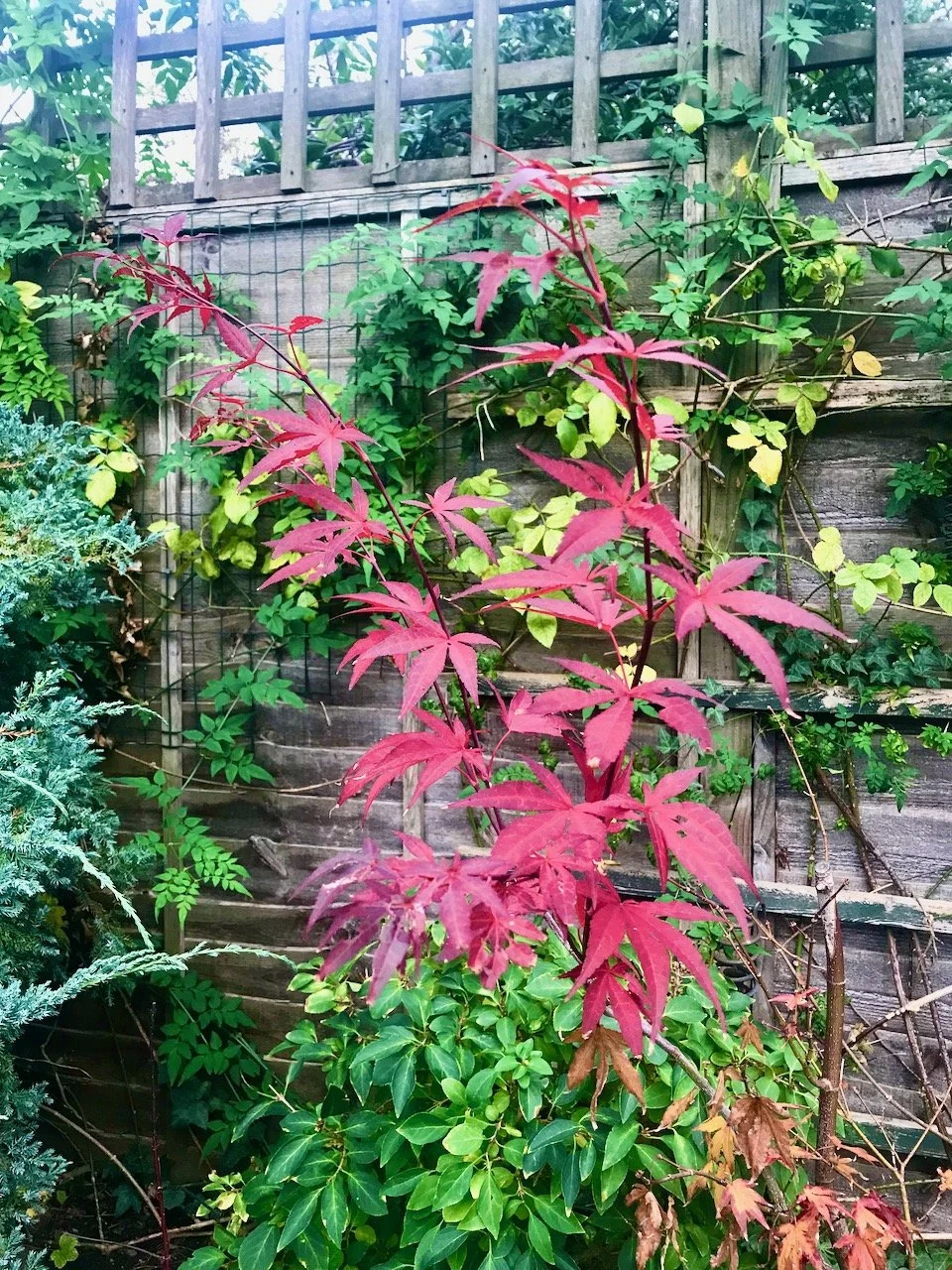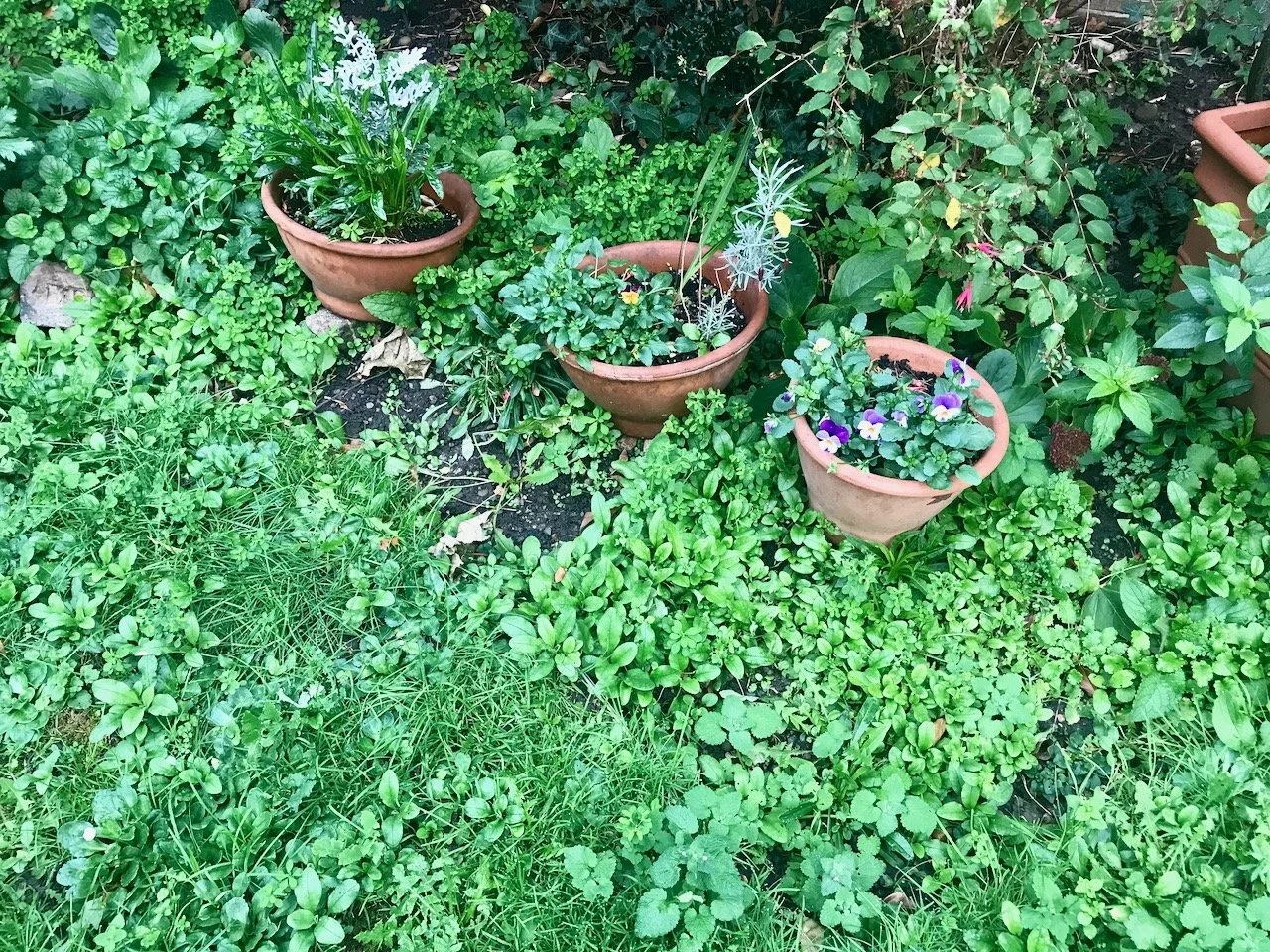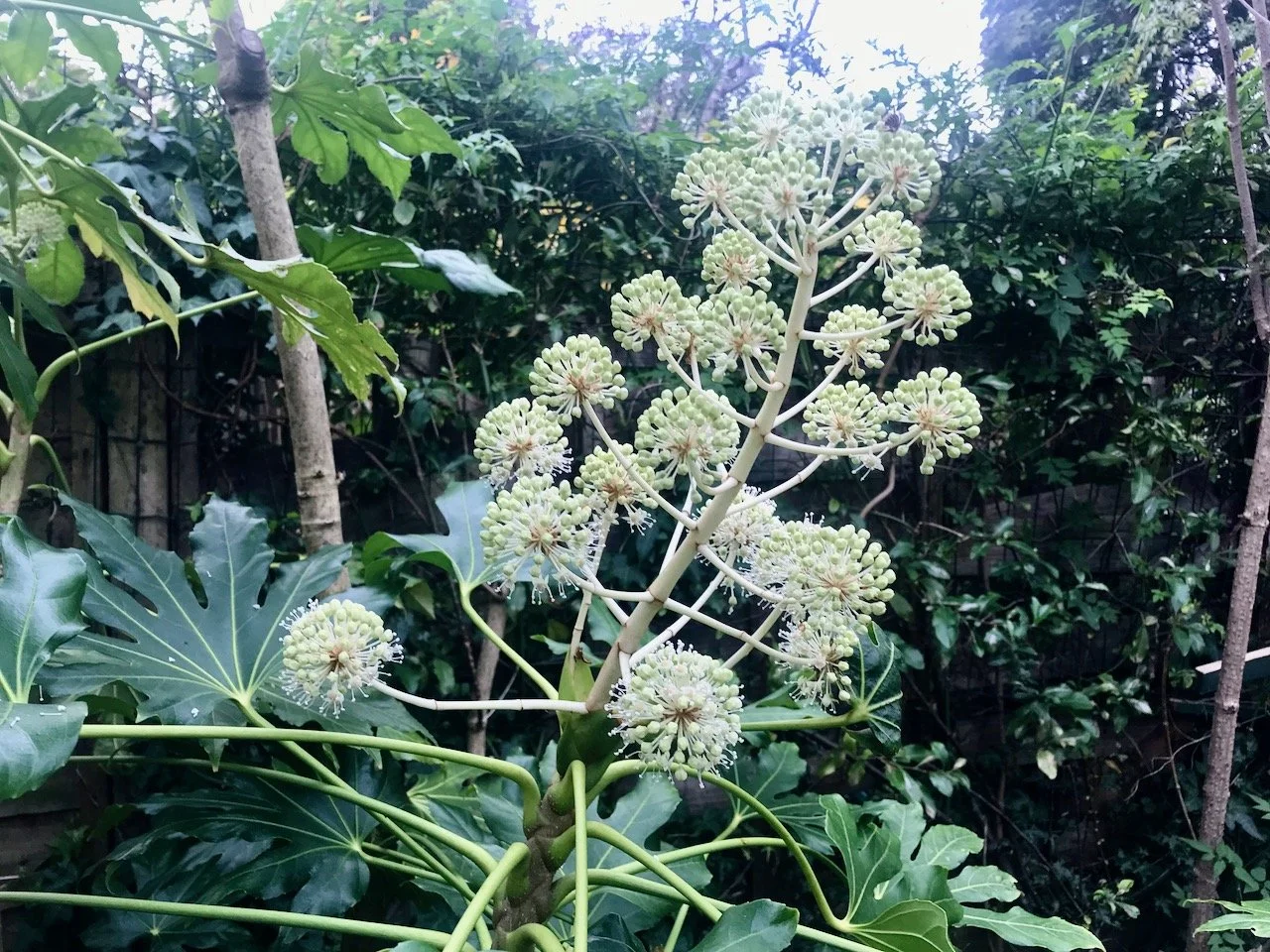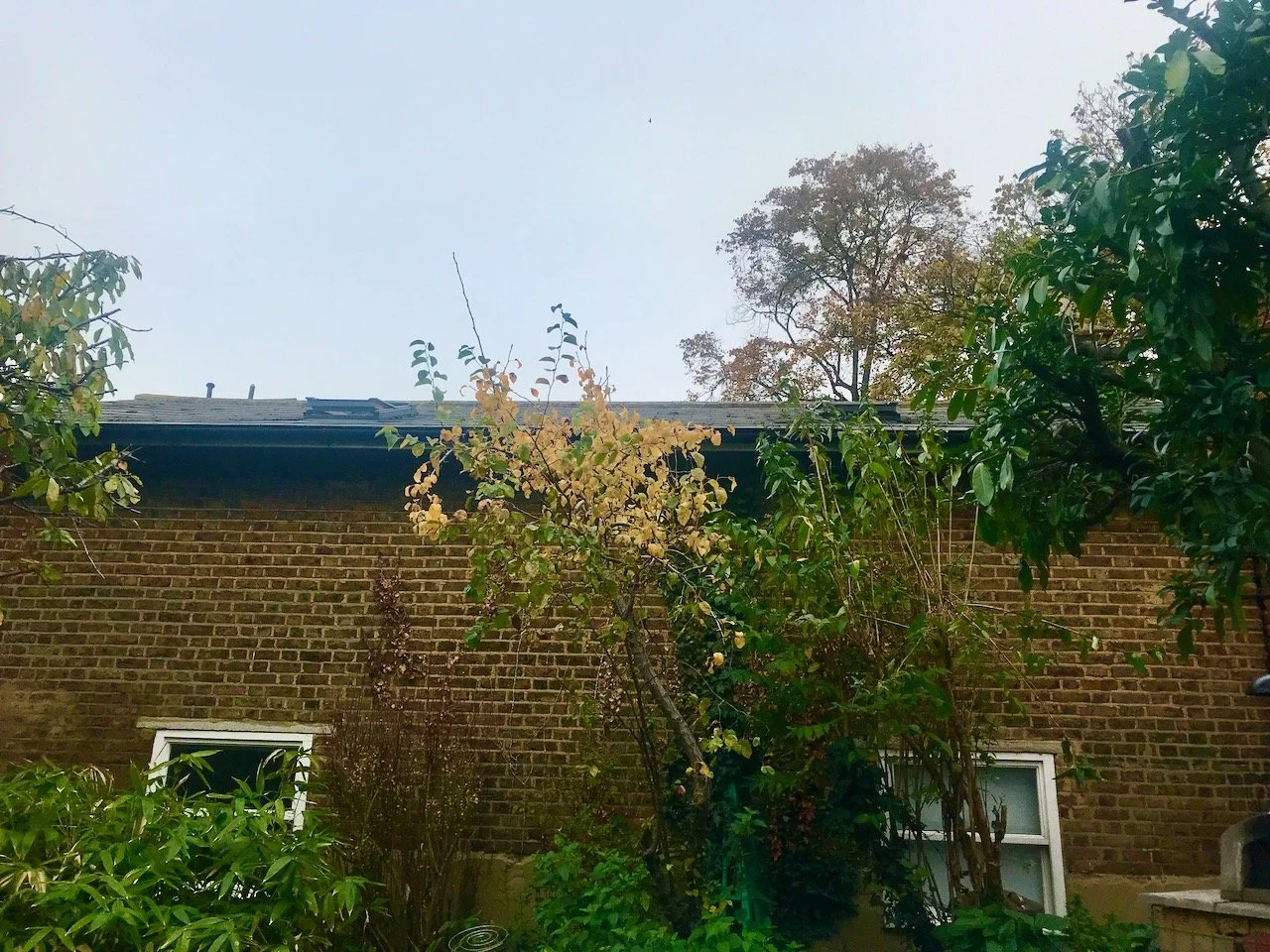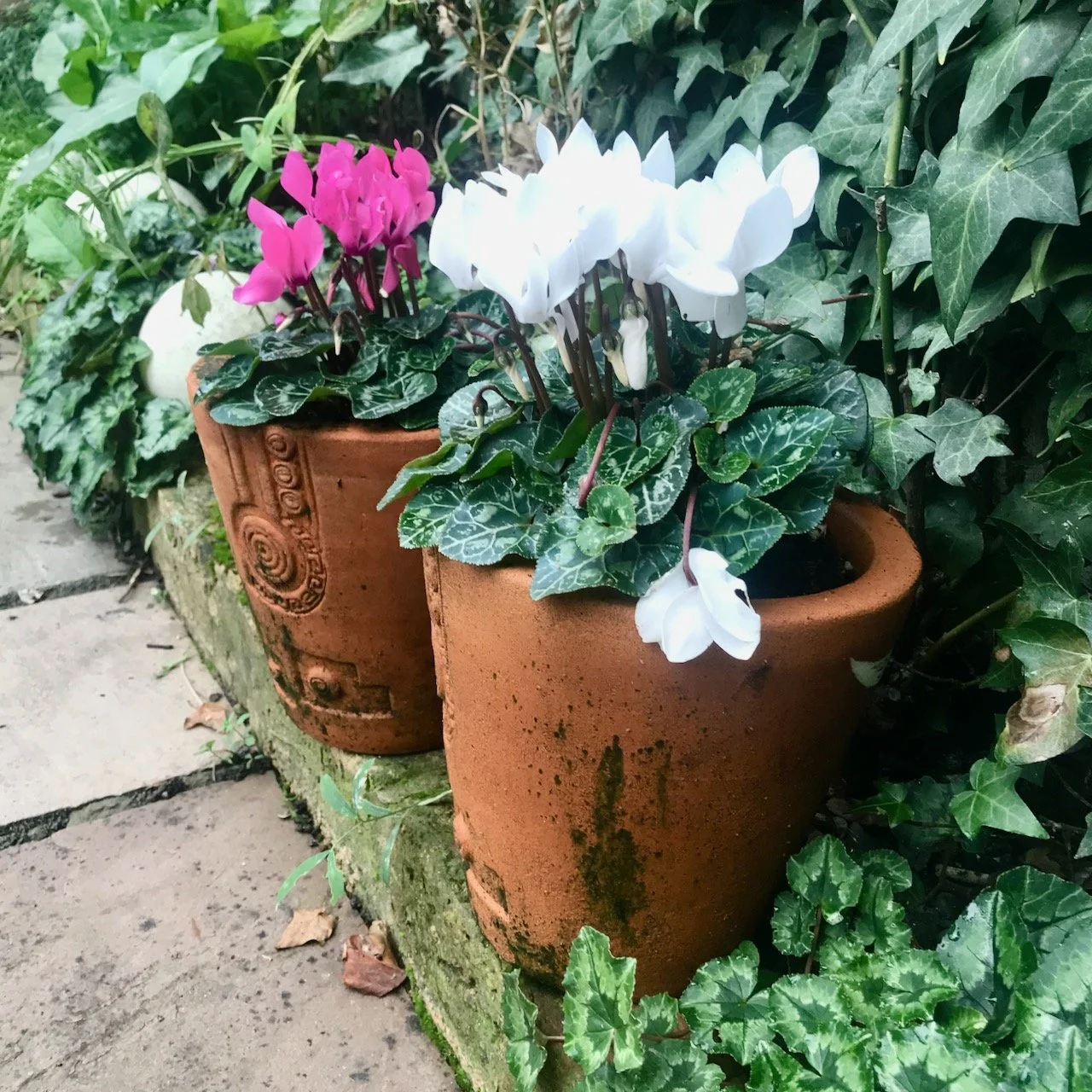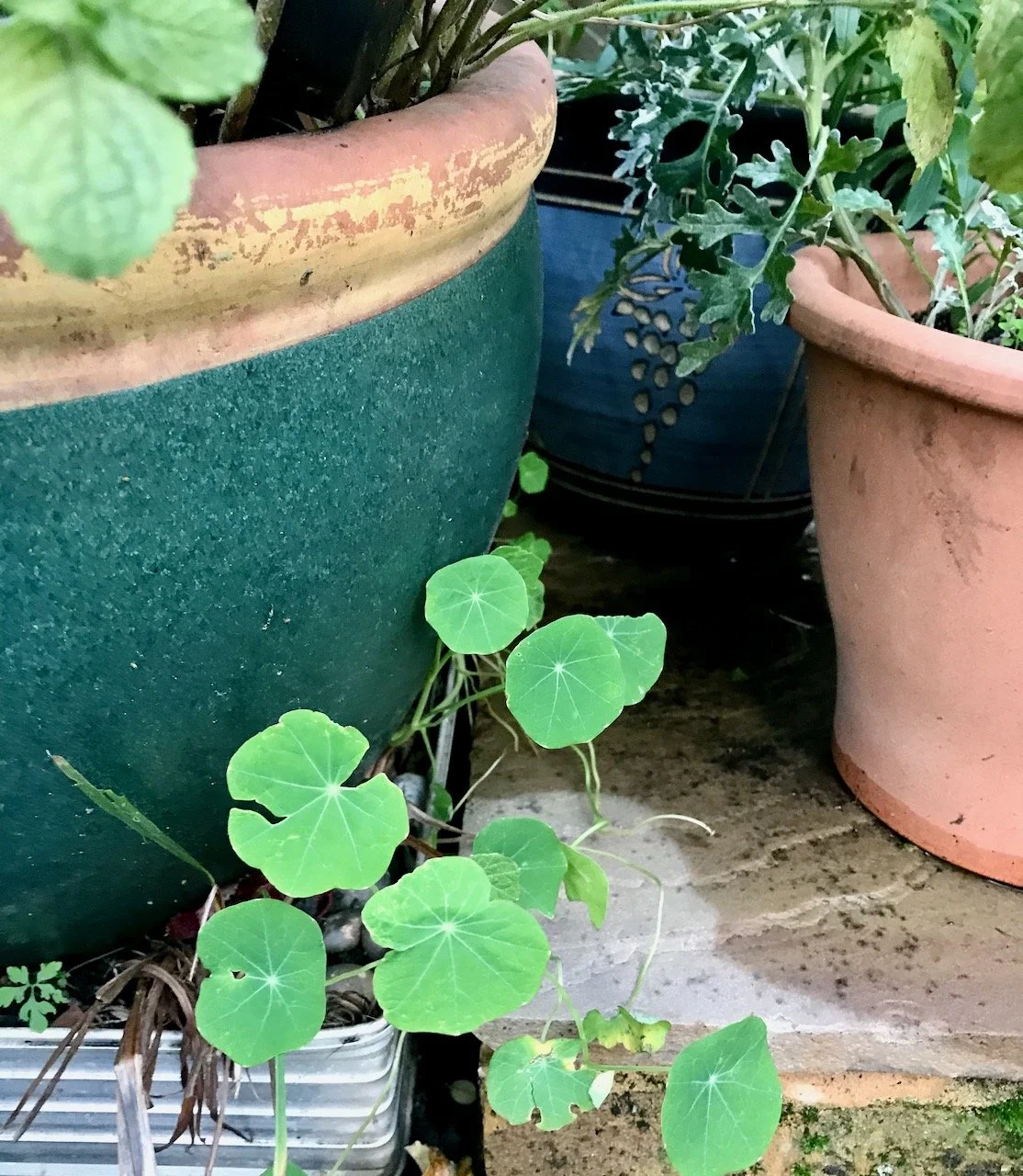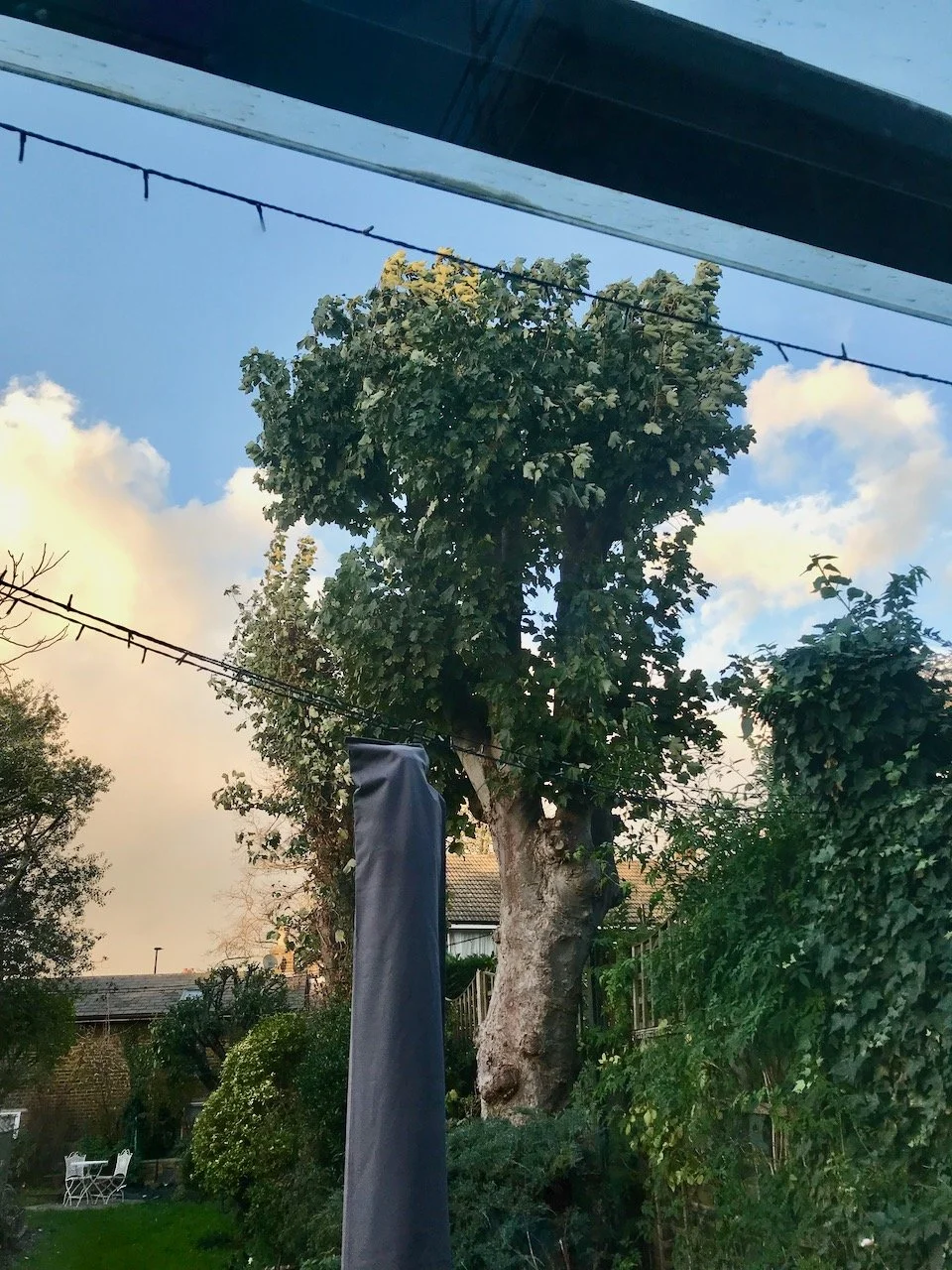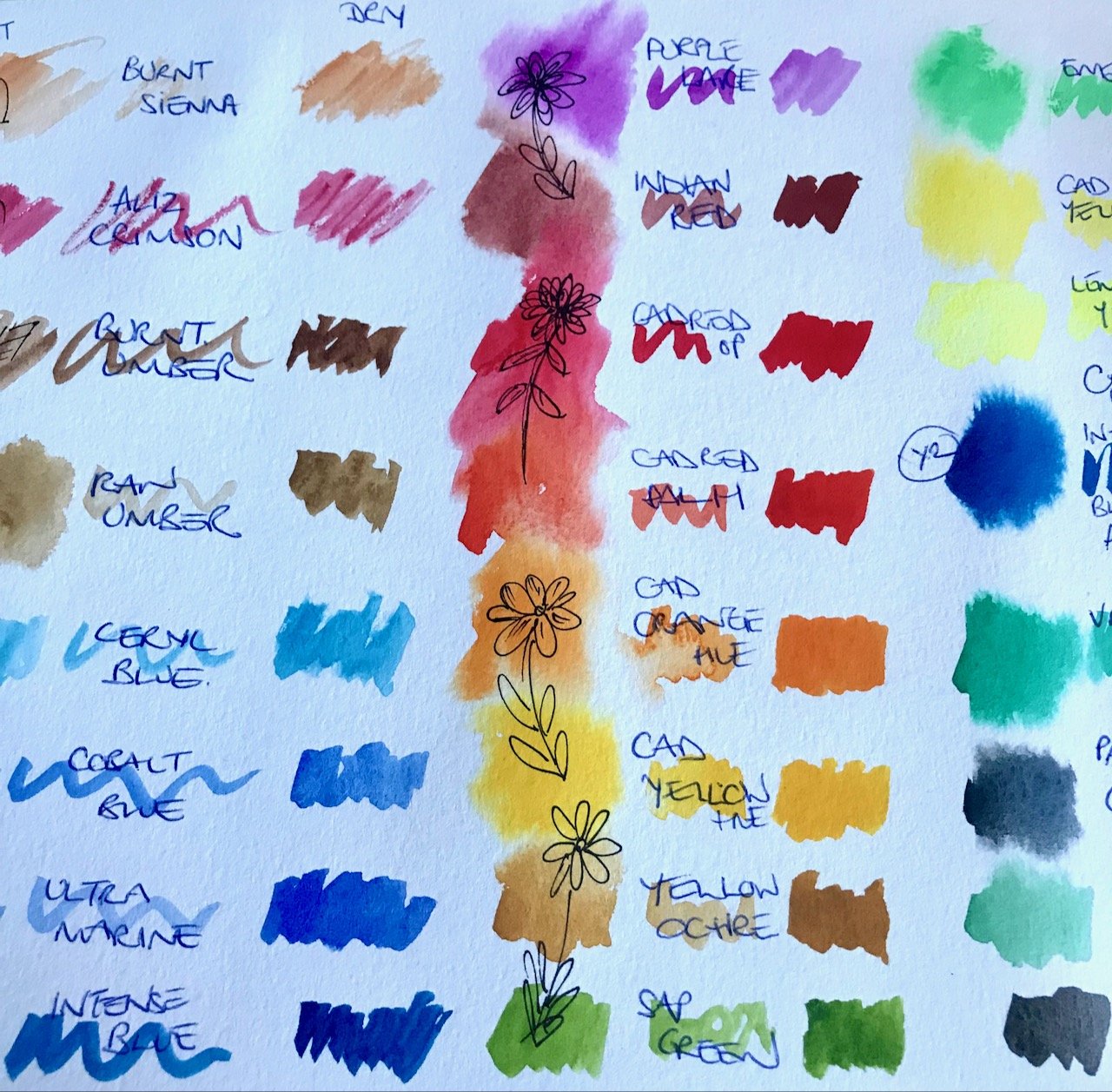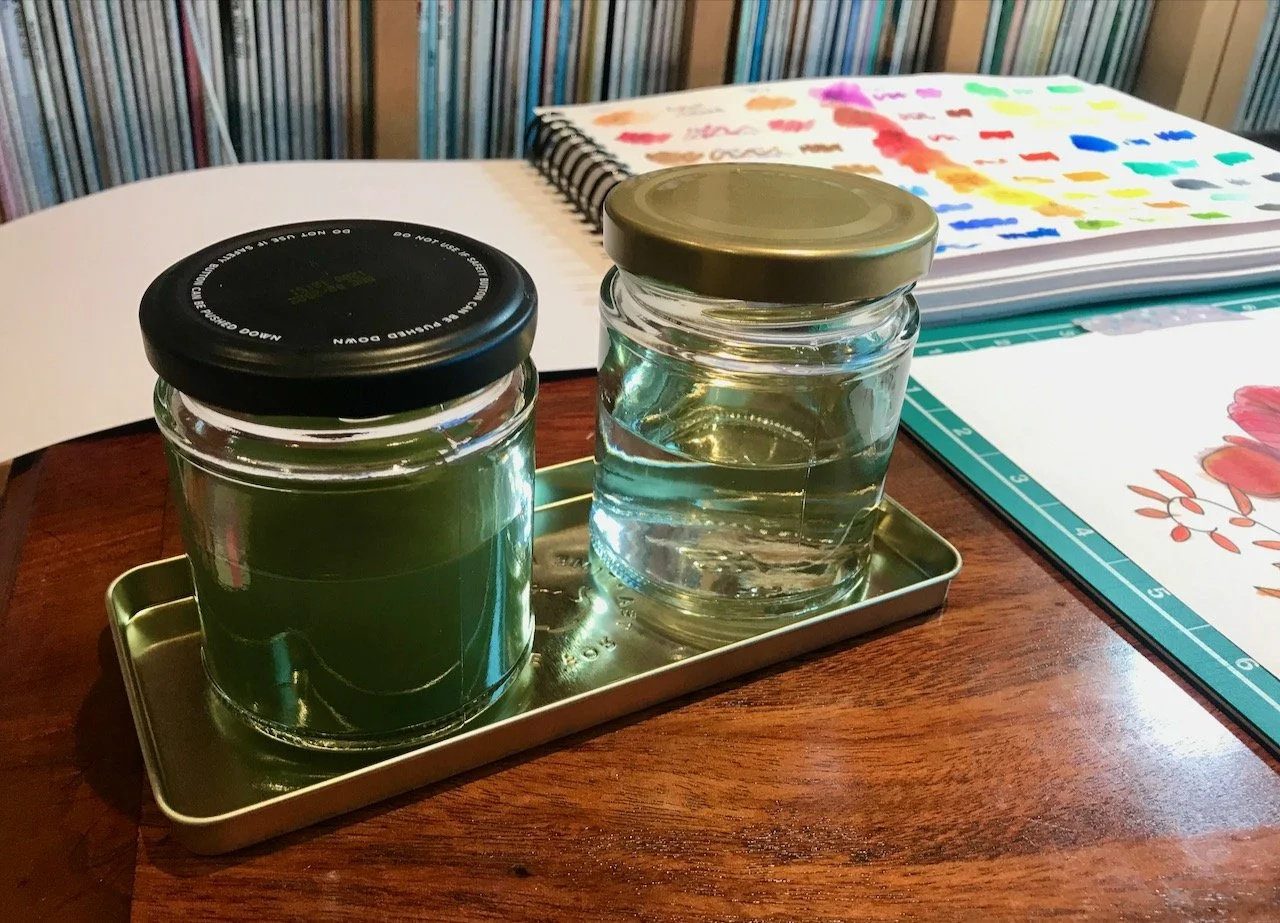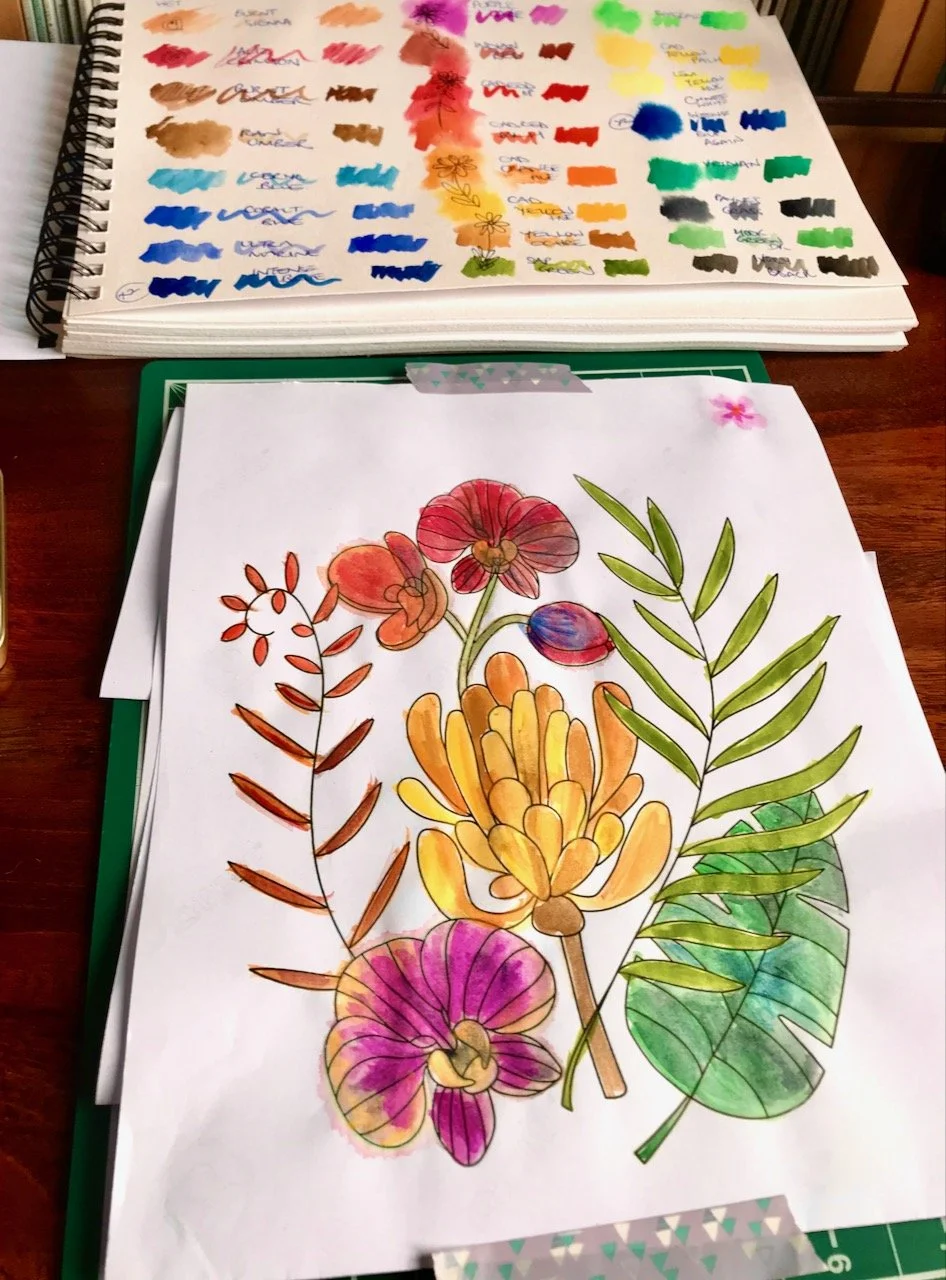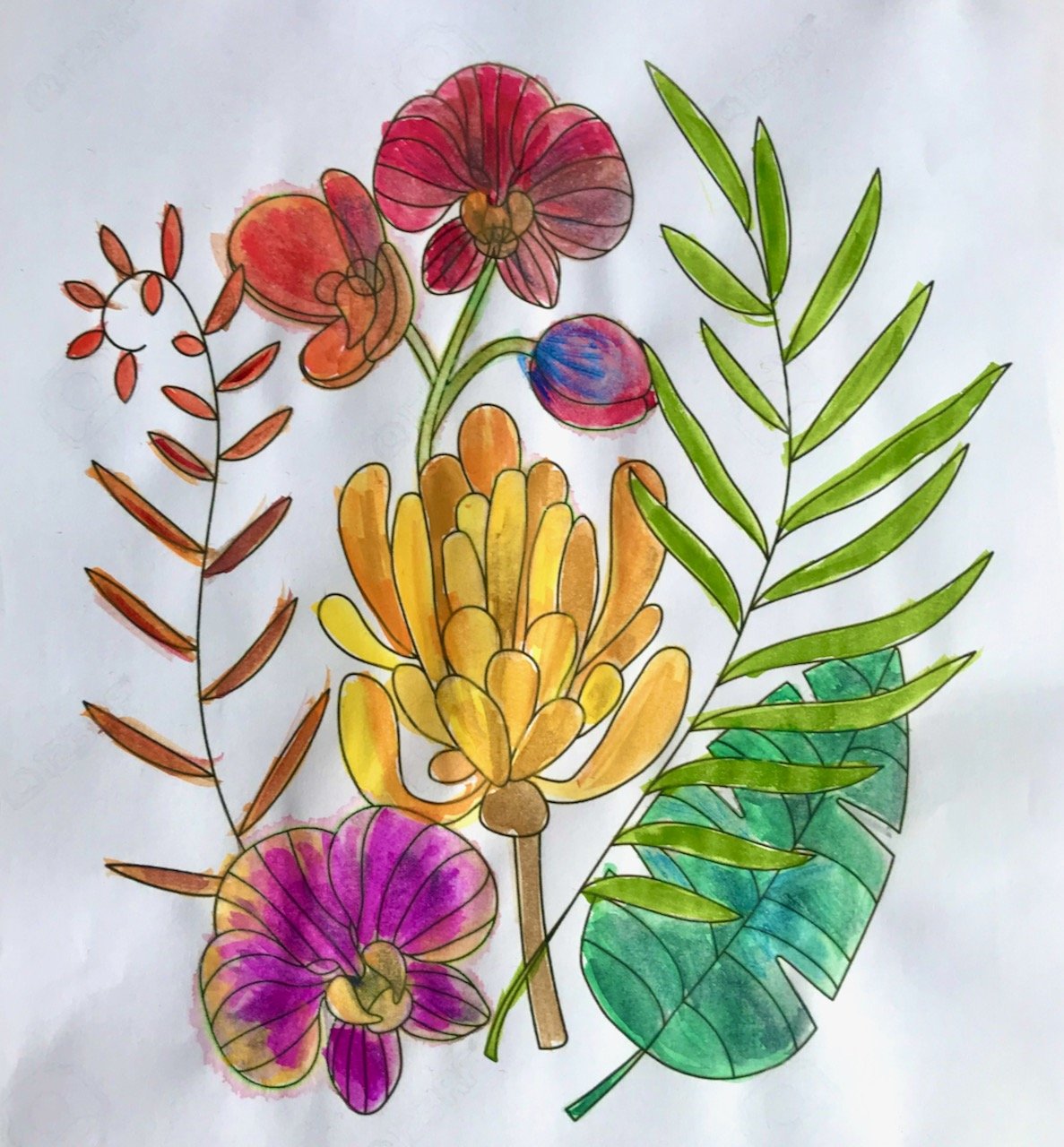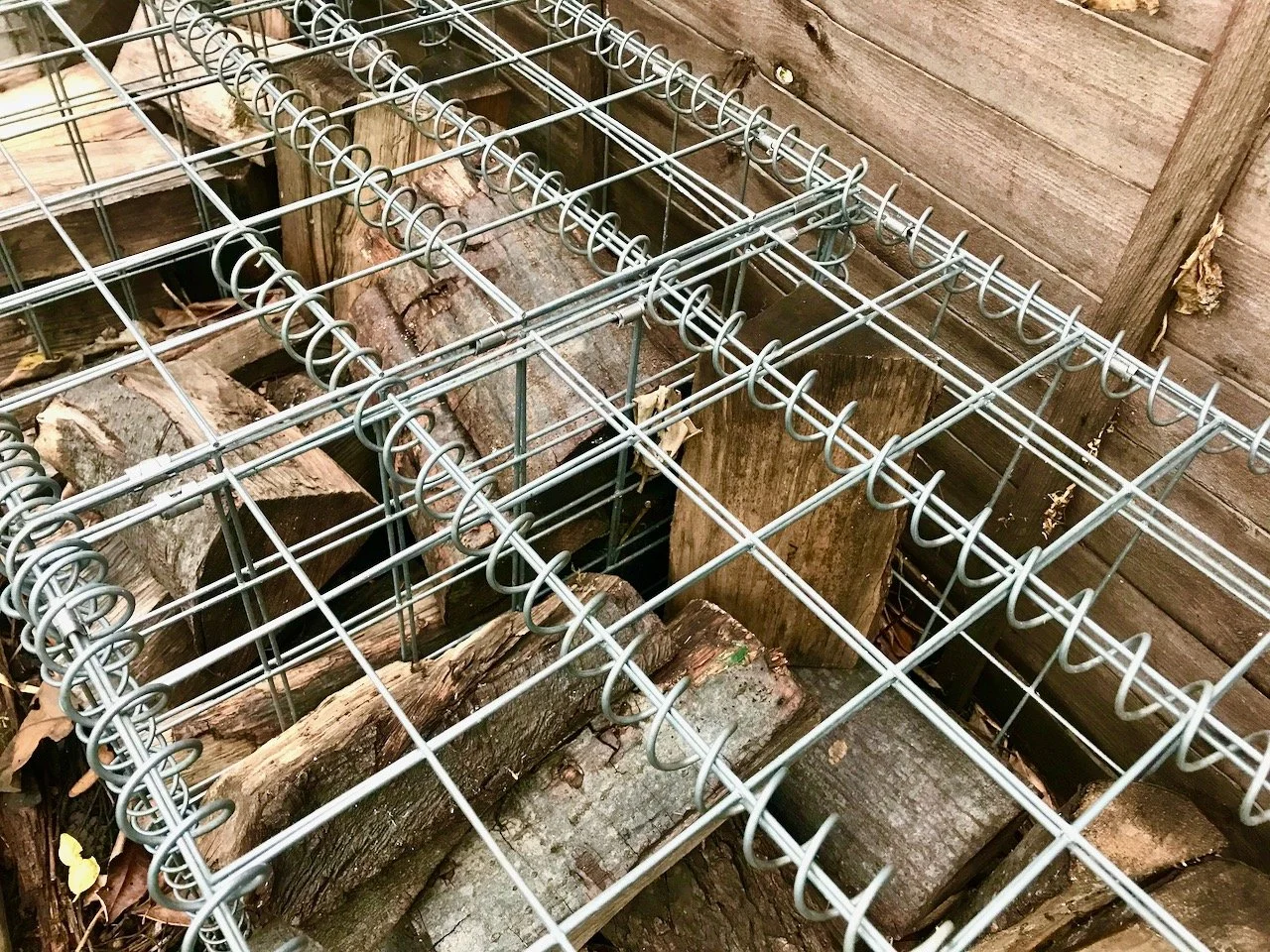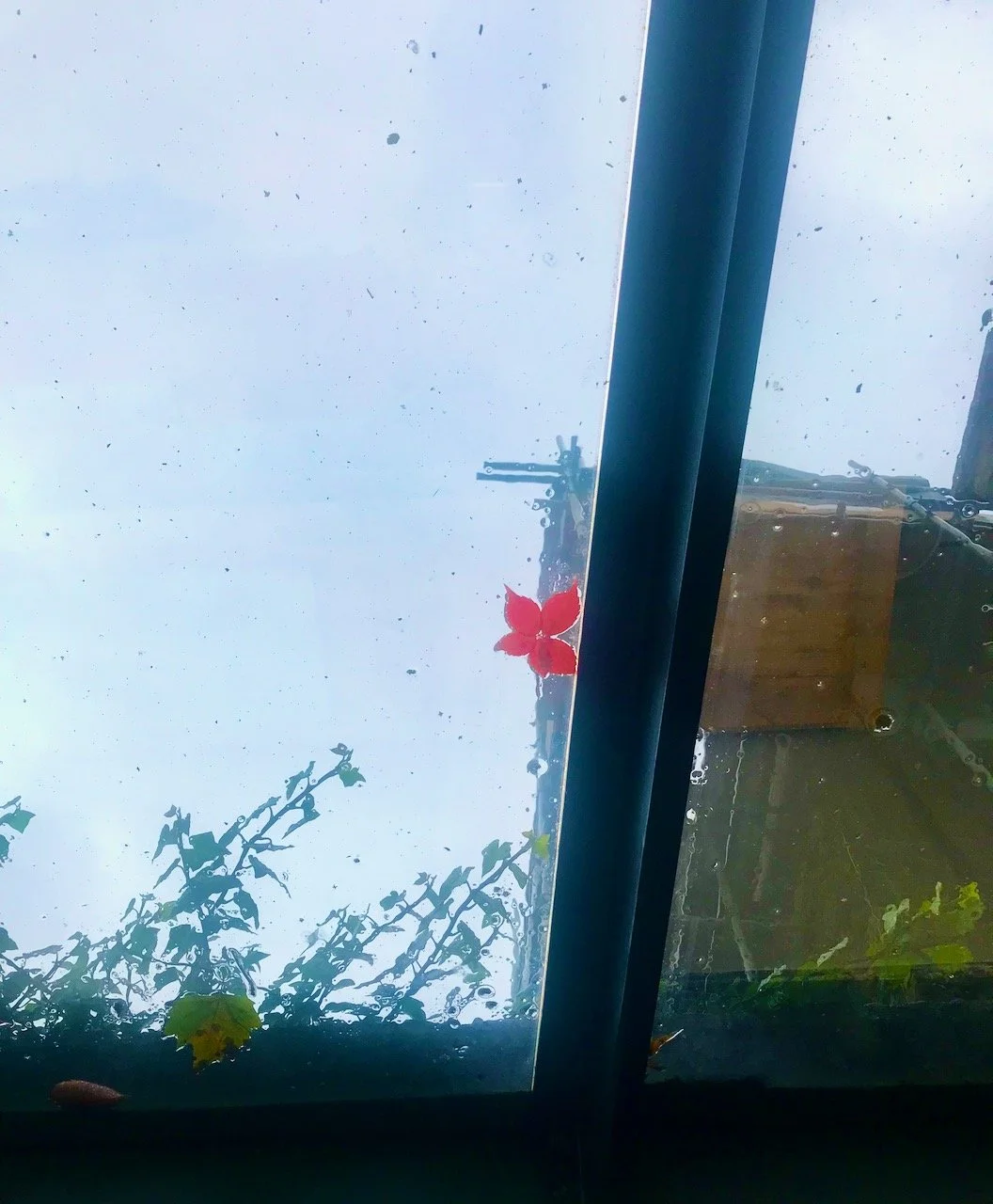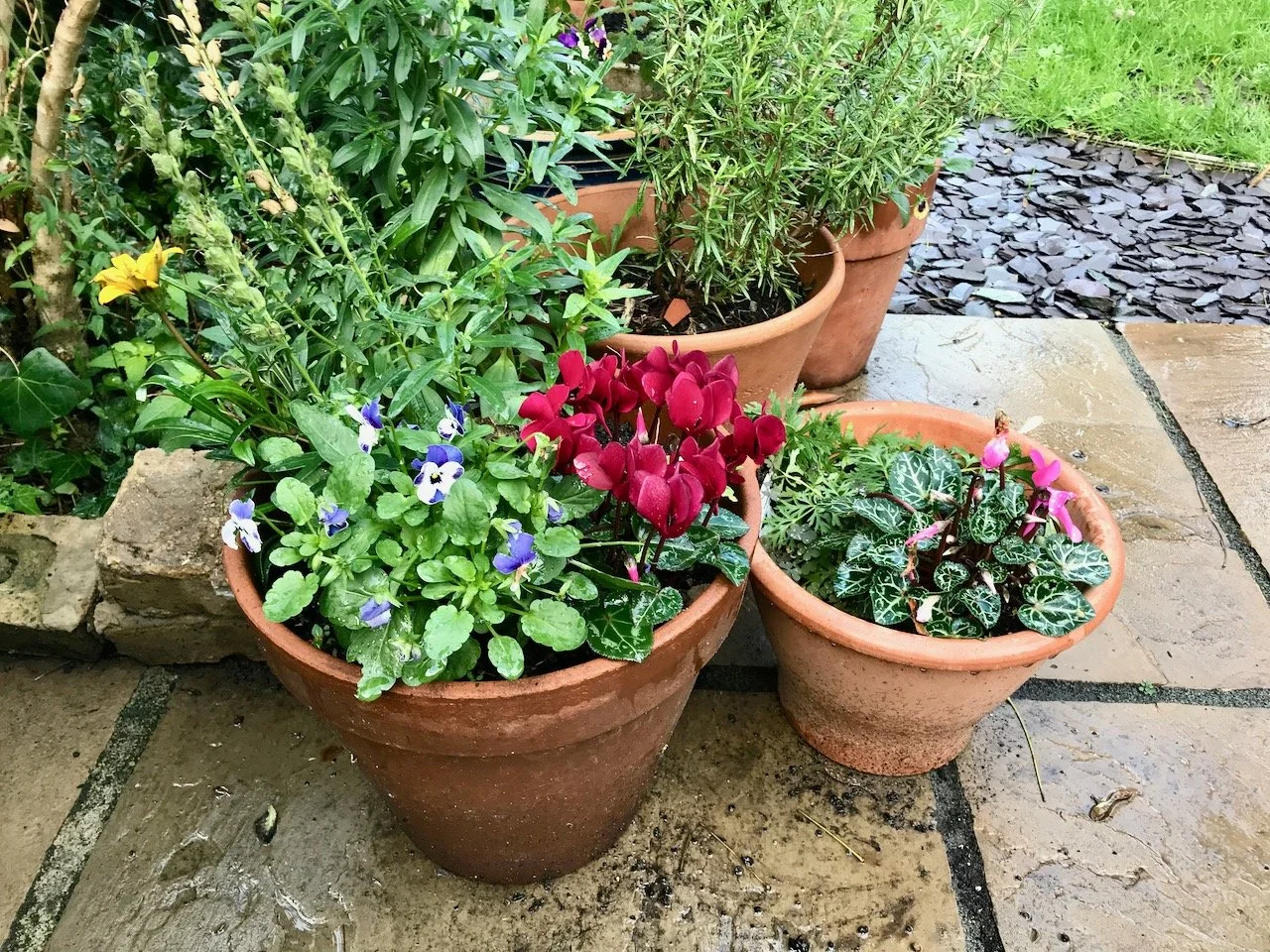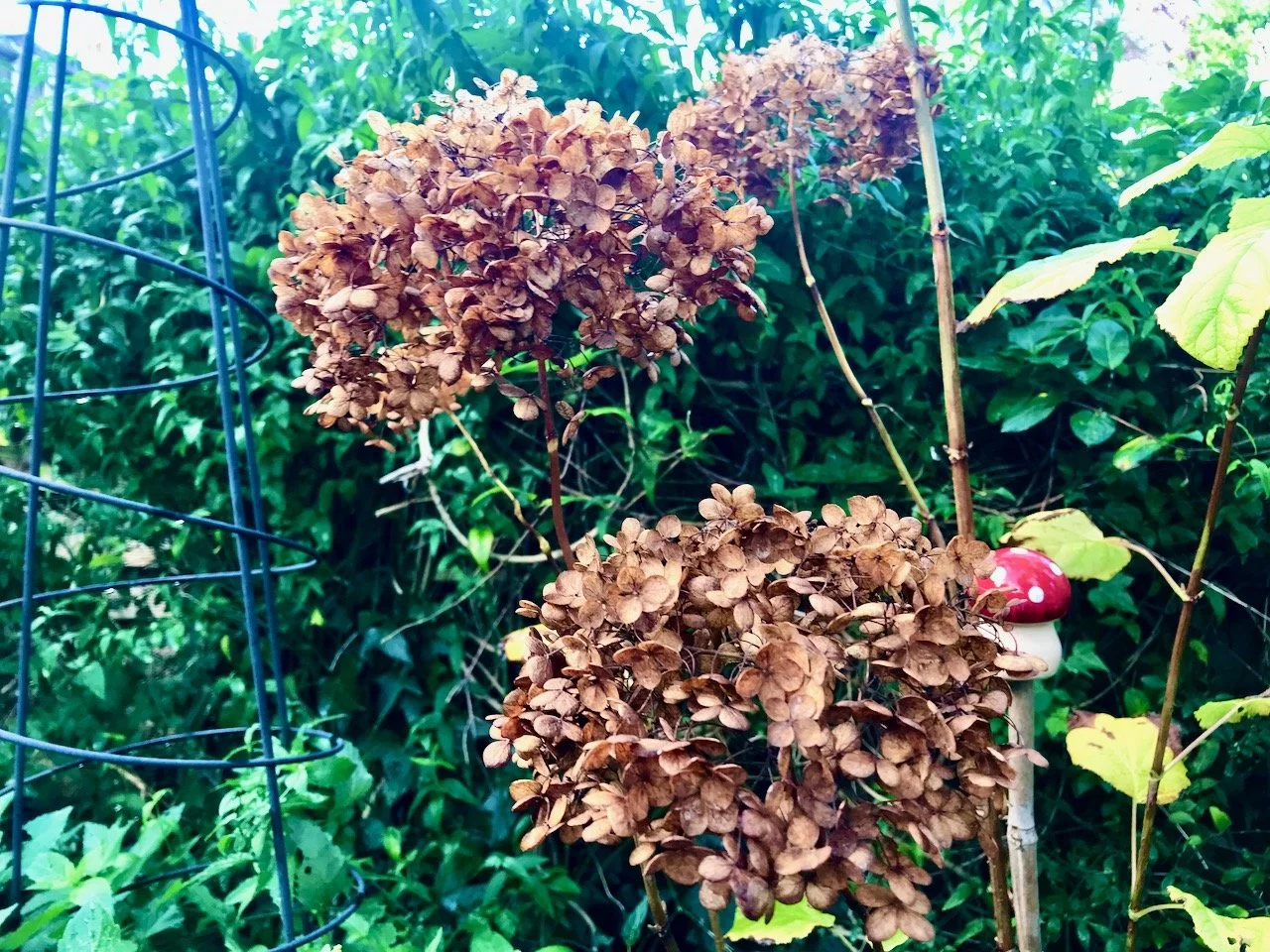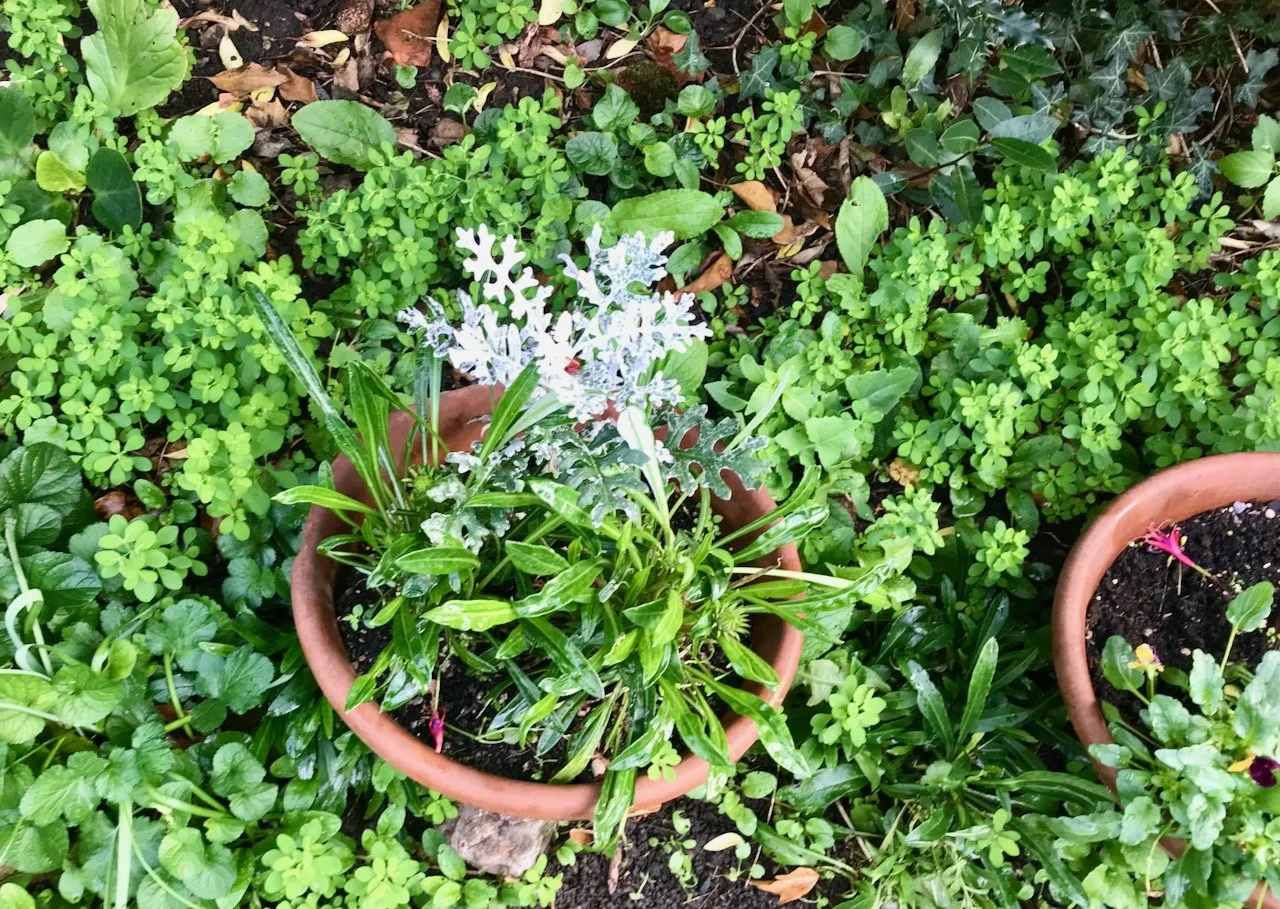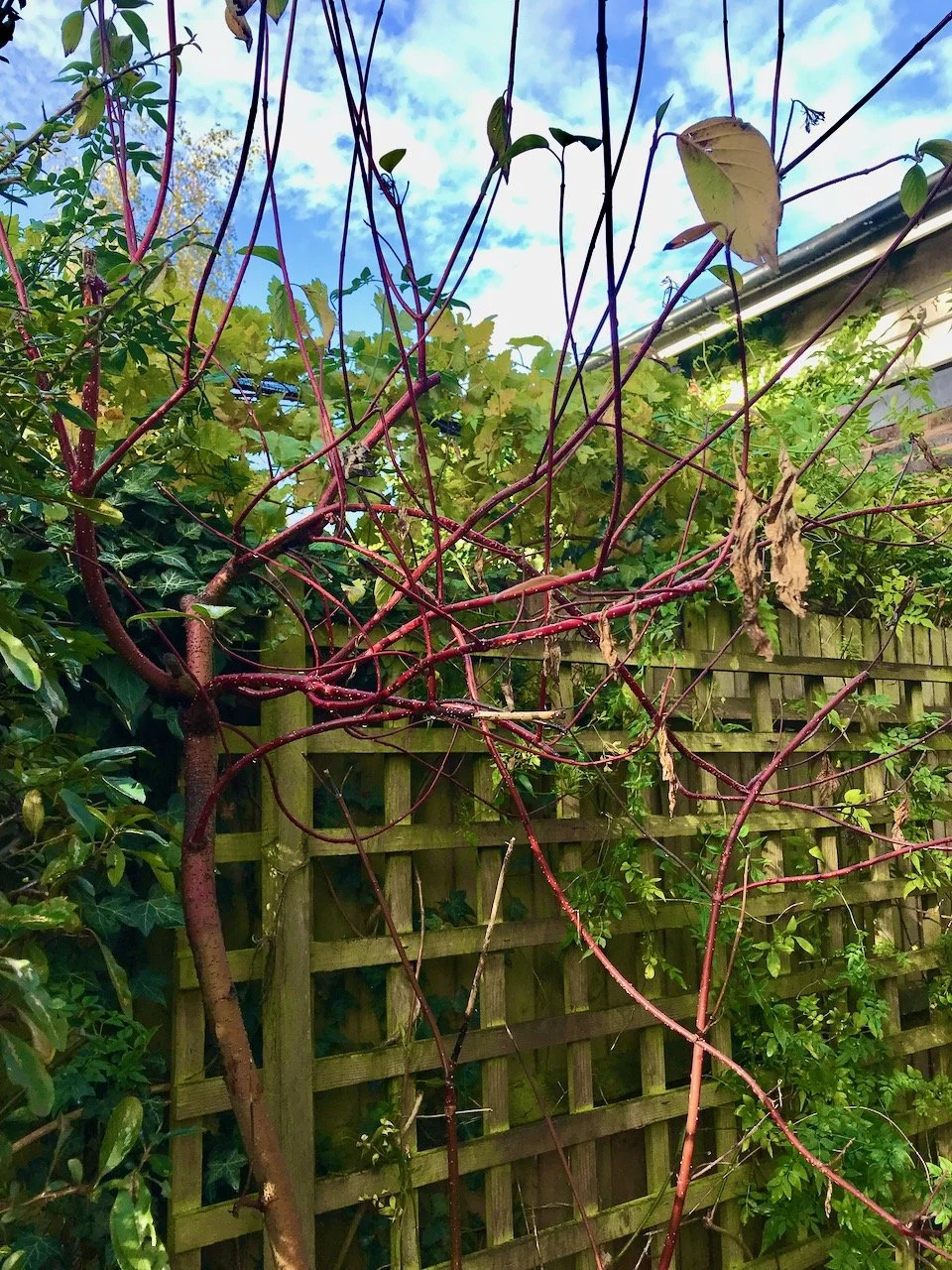Amazingly there’s still plenty of colour in our garden - some of that is winter colour, but more unusually some of that is from summer plants which continue to flower in the mild weather. It’s good to see the more wintery plants start to shine though, and the bright orange of the flowers on the berberis are always a favourite.
The potted acer, which has grown so well this year, kept its leaves for most of the month. I was glad to get a picture of it when I did, as wouldn’t you know it but the very next day the leaves had completely gone. Not one remained!
The weeds are still there though. And the forget-me-nots. And I’ve weeded, more than once. So these exact ones are most likely not there, and there might have been a temporary reprieve, but as weeds do - some are back. As I said last month, they seem to have been given a burst of life by this summer’s drought. Our hosepipe ban has been lifted, but obviously it’s been too wet to need to water the garden…
The fatsia is another of the plants which shines in winter - these ‘flowers’ are always stunning and are definitely worth having a plant in your garden for.
At the back of the garden on sunny days the pear tree and its yellow leaves have been catching the sun and providing almost a ‘burning’ focal point. That is until the leaves dropped, and all of a sudden that view was bare. One morning over breakfast MOH noticed and wondered why it looked so different all of a sudden. That old thing where things are familiar, until they change and you can’t work out why.
The winter bedding planted up last month is continuing to do well, though the cyclamens are doing much better than the violas which seem to be having a bit of a flowering break. Hopefully they’ll be back - they’re not as bold as the cyclamen though, so perhaps they’re just doing their thing in a more subtle way. Though it’s not really a season for subtlety when mostly the garden is viewed from indoors.
One thing that we’re seeing first hand how it develops is this rosebud which has the tenacity to bud and bloom in November, and to be followed by another bud too. The plants are confused by the weather clearly, even in this pretty sheltered and sunless (at this time of the year) spot.
While out weeding one afternoon I spotted these young nasturtium leaves, which have self seeded themselves here. We had none all summer, but come November there they are. I’m not sure if they’ll last or even get to flowering, especially now we’re having a bit of a cold snap, but we’ll see.
And yes, that is my summer bedding. Still going strong and putting on quite a show to rival the winter bedding. Crazy times.
And finally before I end this post, an update on the trees we had pollarded in the summer. They’re still in leaf where usually they would have completely shed their leaves by now. We’re not really complaining as once the leaves come down, they need to be picked up again and dealt with - but this is highly unusual behaviour for the end of November. It’ll be interesting to see what they do over the next few months, but until then let me know if you’ve also noticed unseasonal behaviour in your gardens.

